Tim-D-AmazonBookPubl Misc 2 to 3
Tim-D-AmazonBookPubl Misc 2 to 3 - Part 1
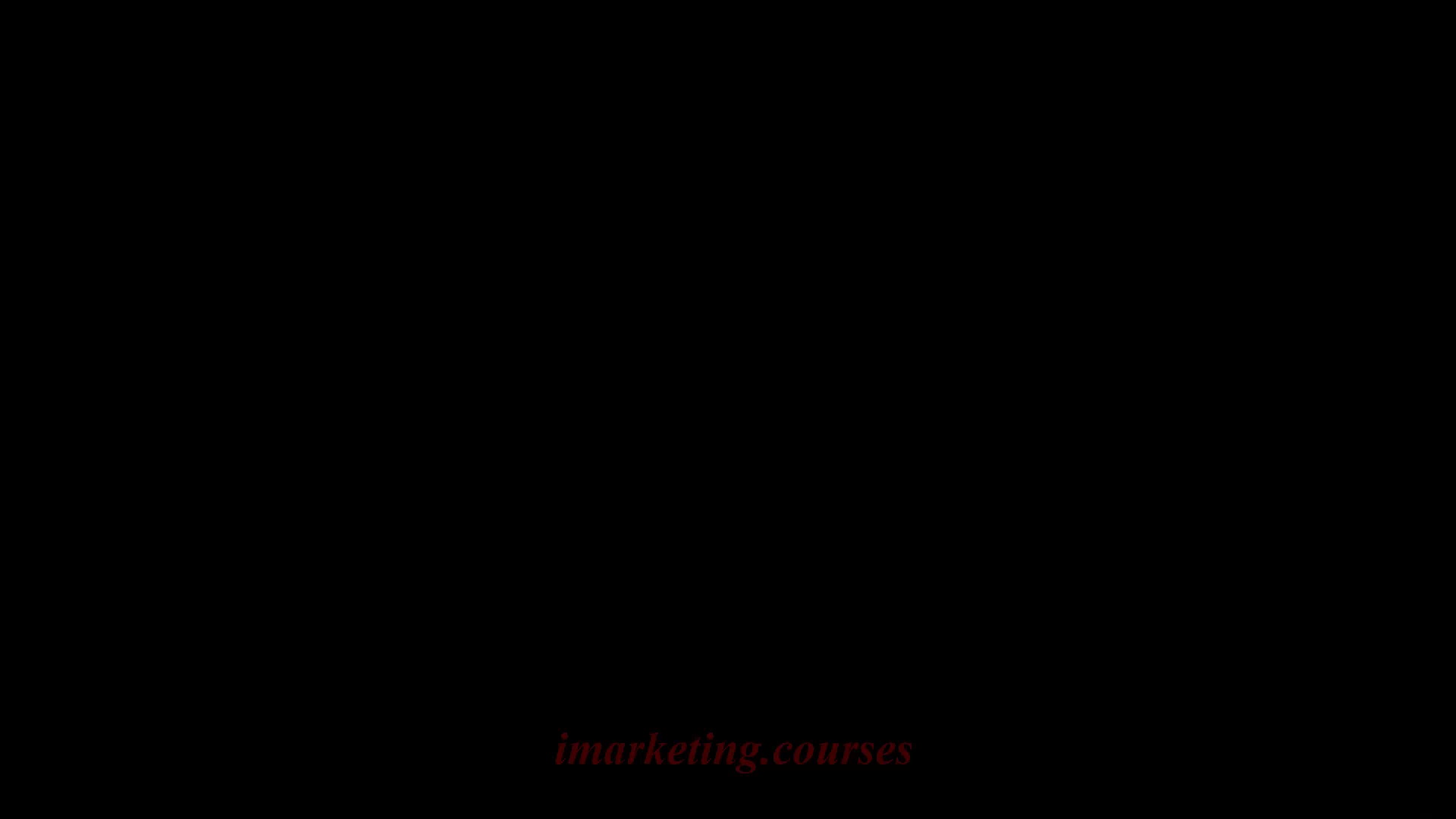
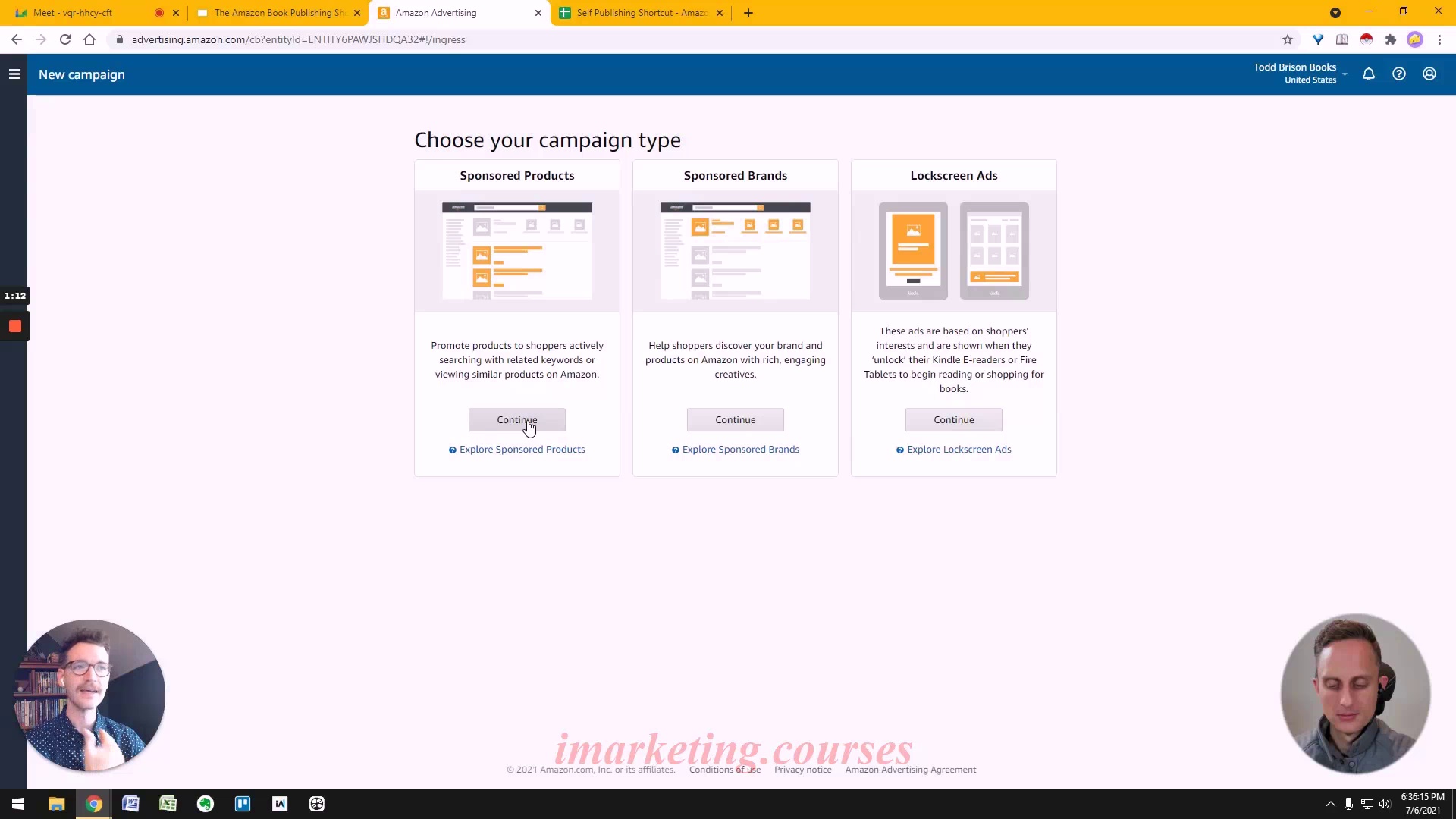
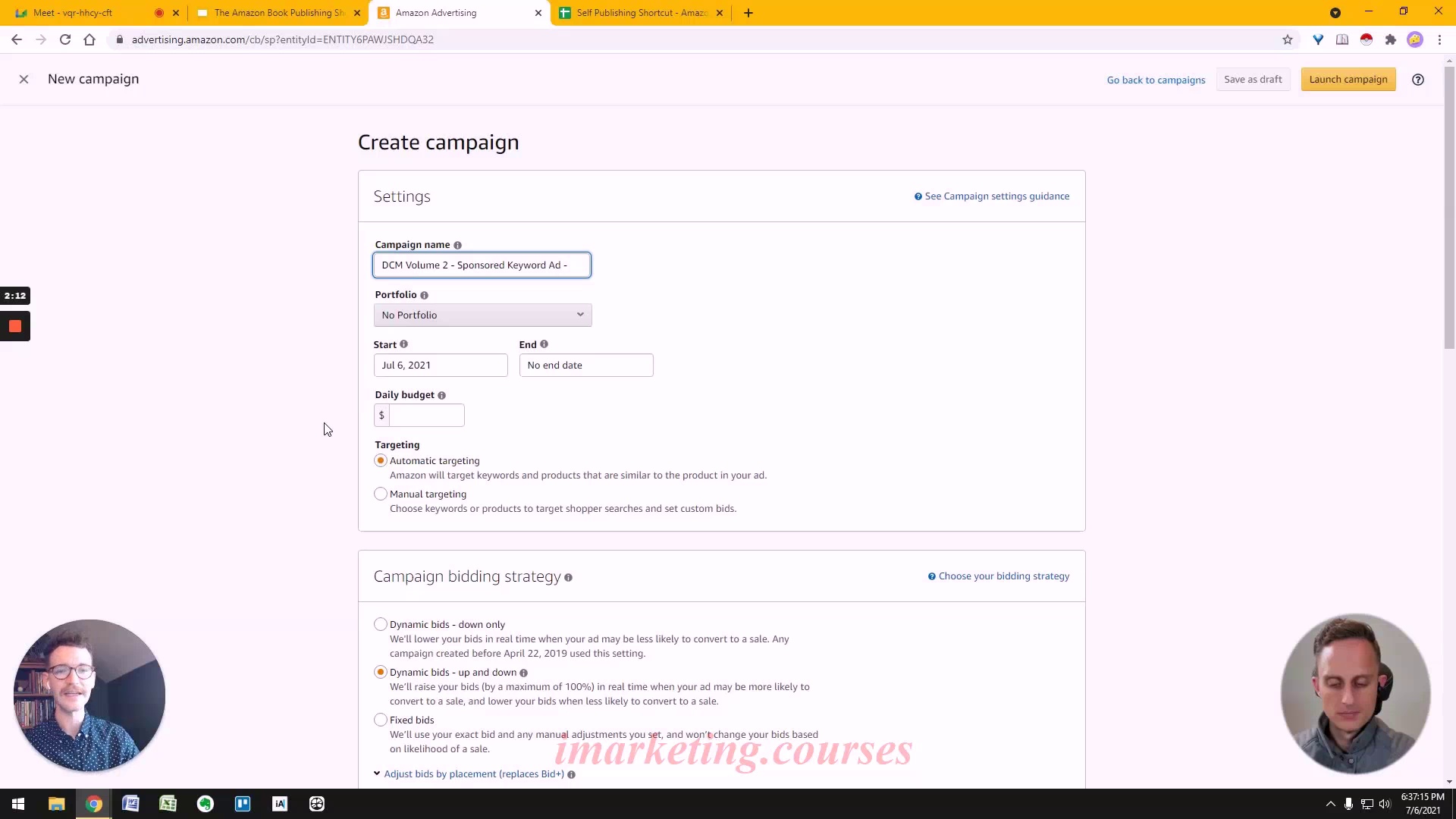
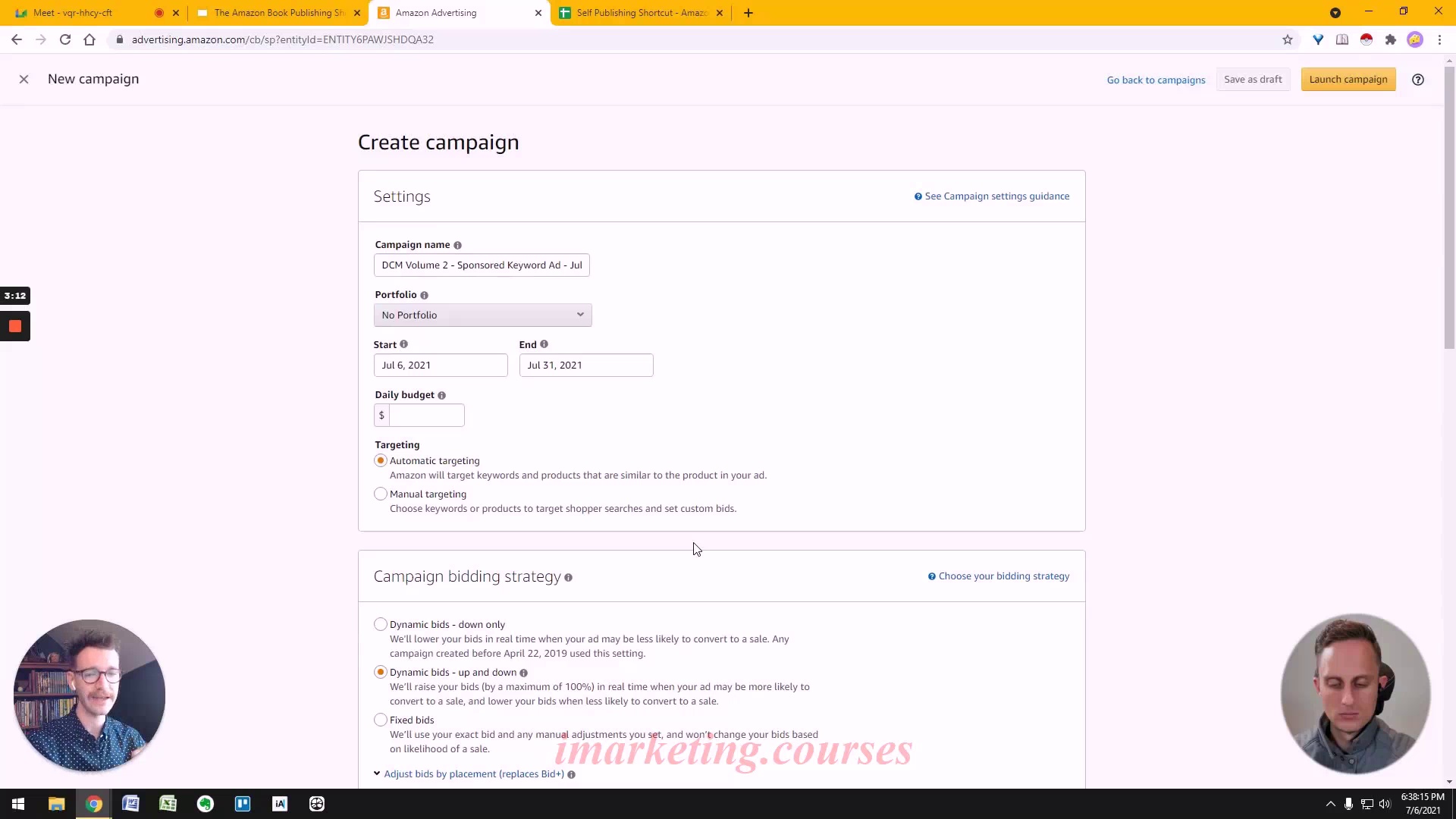

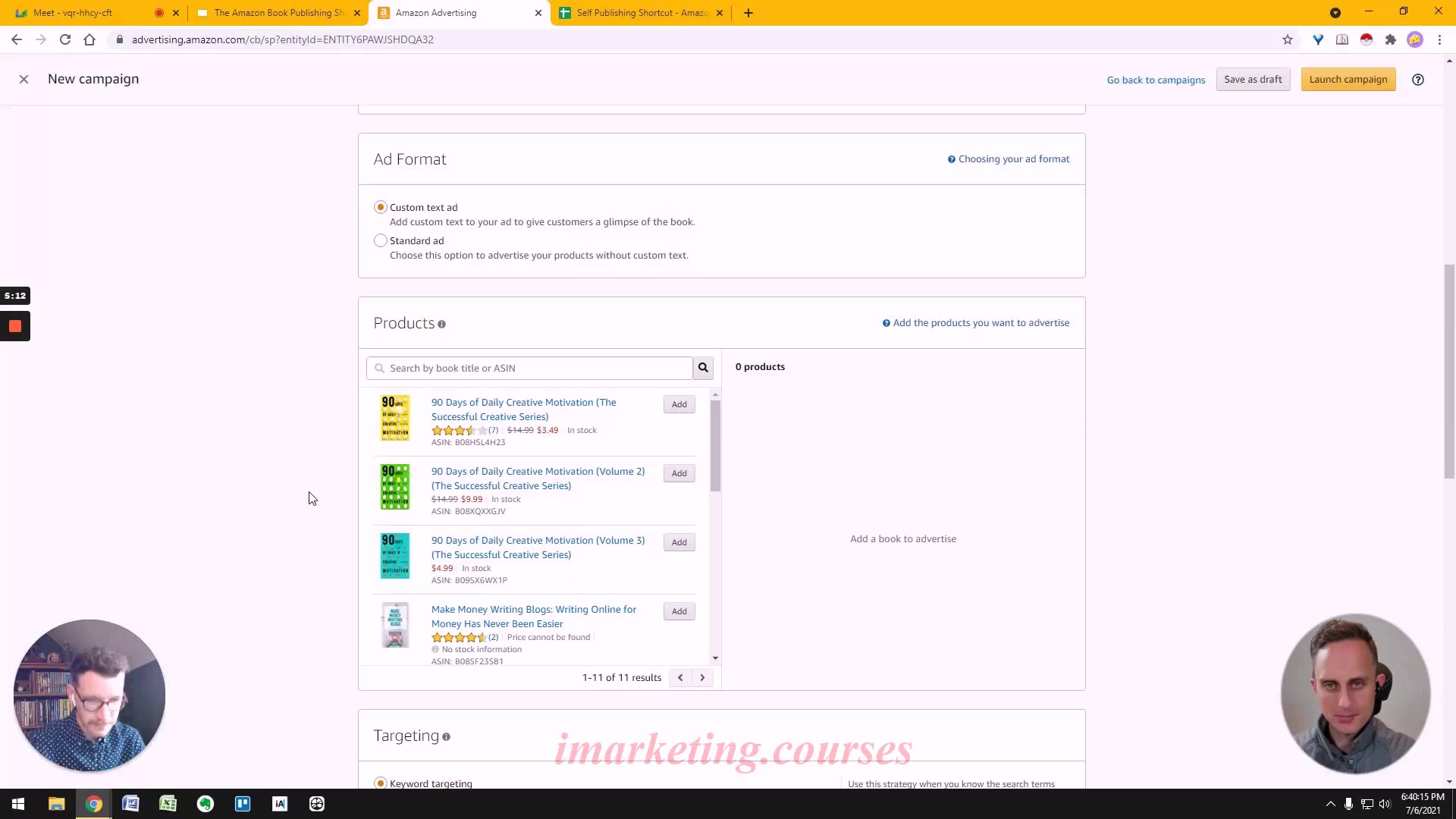
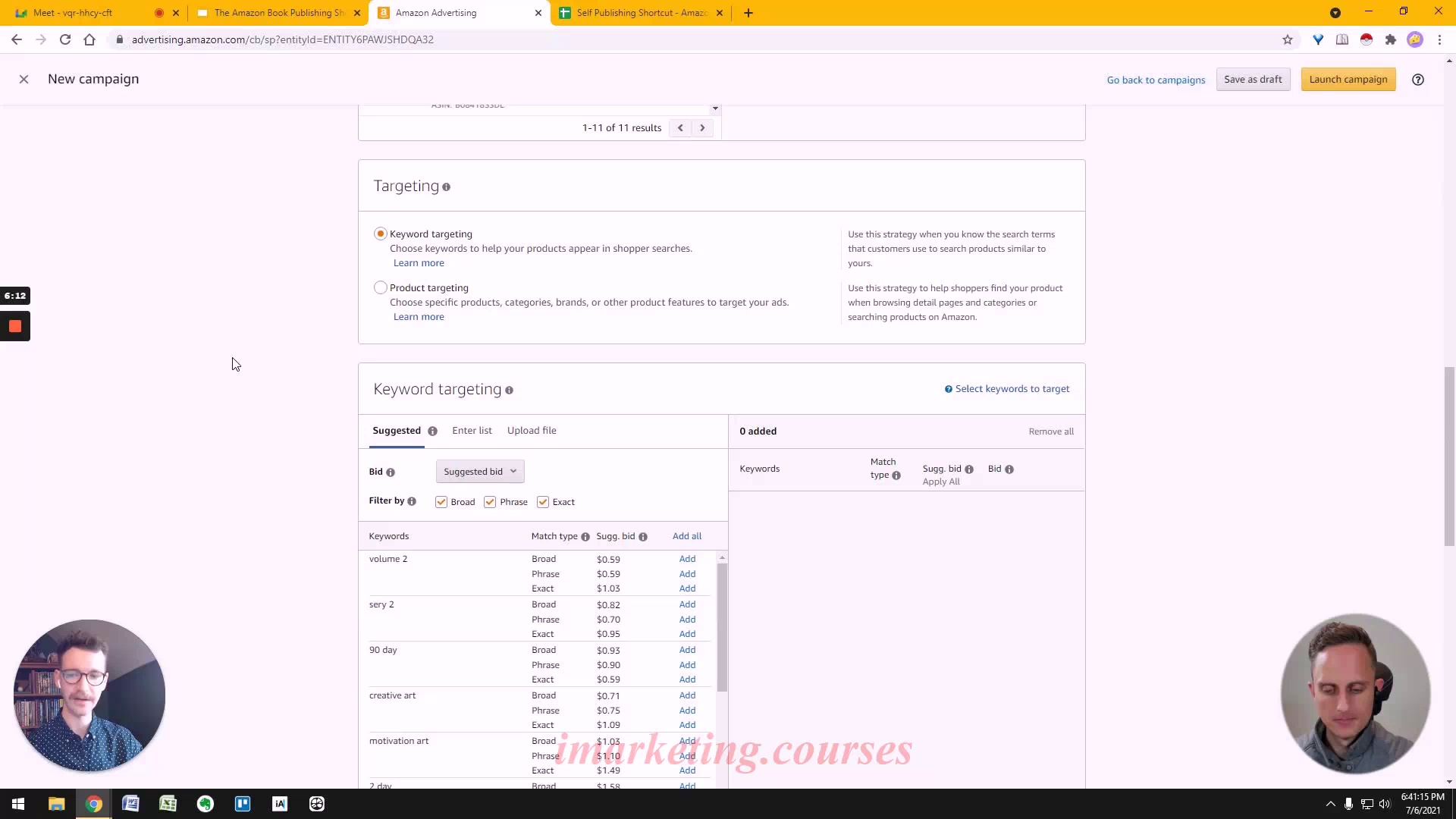
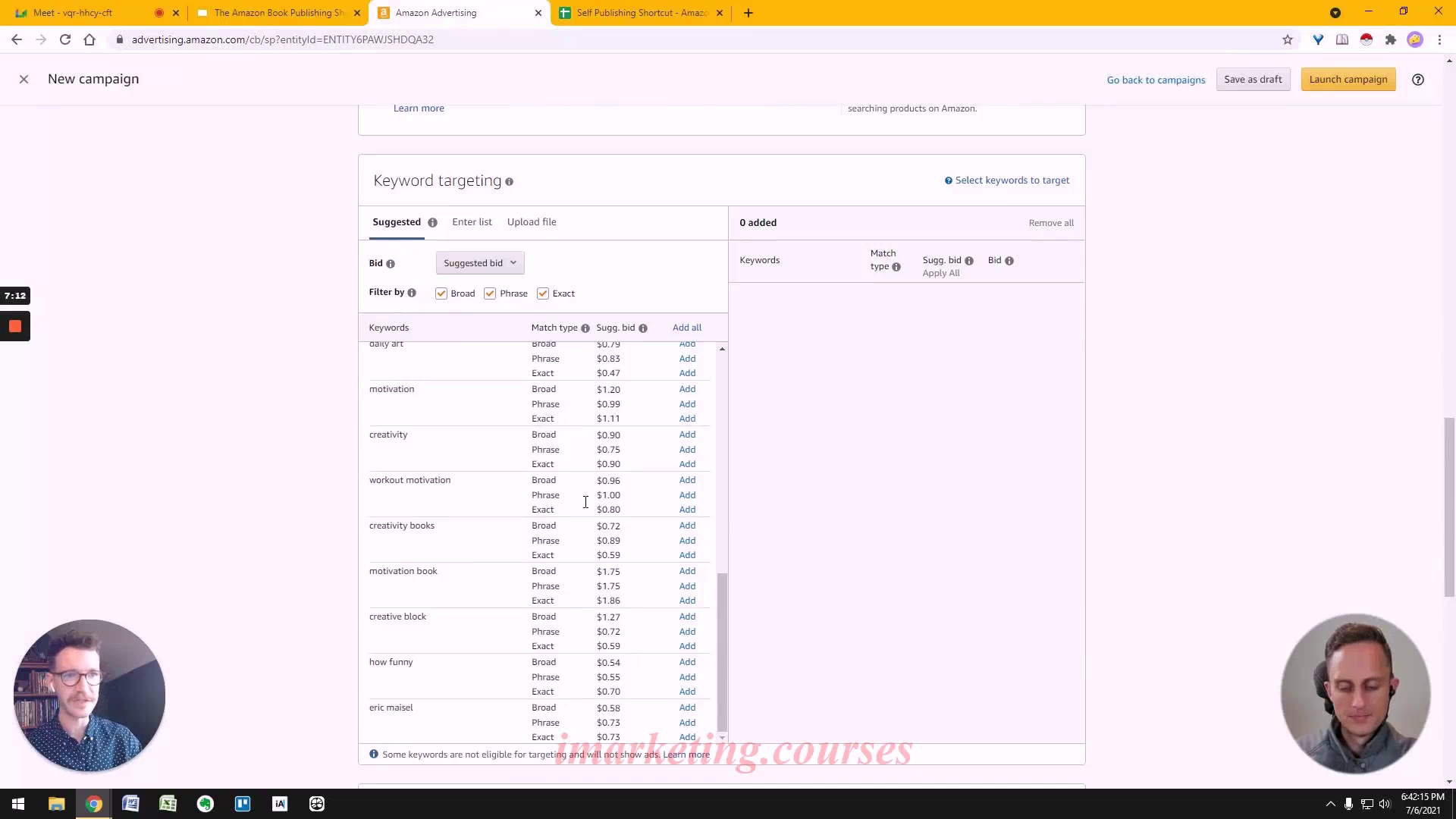
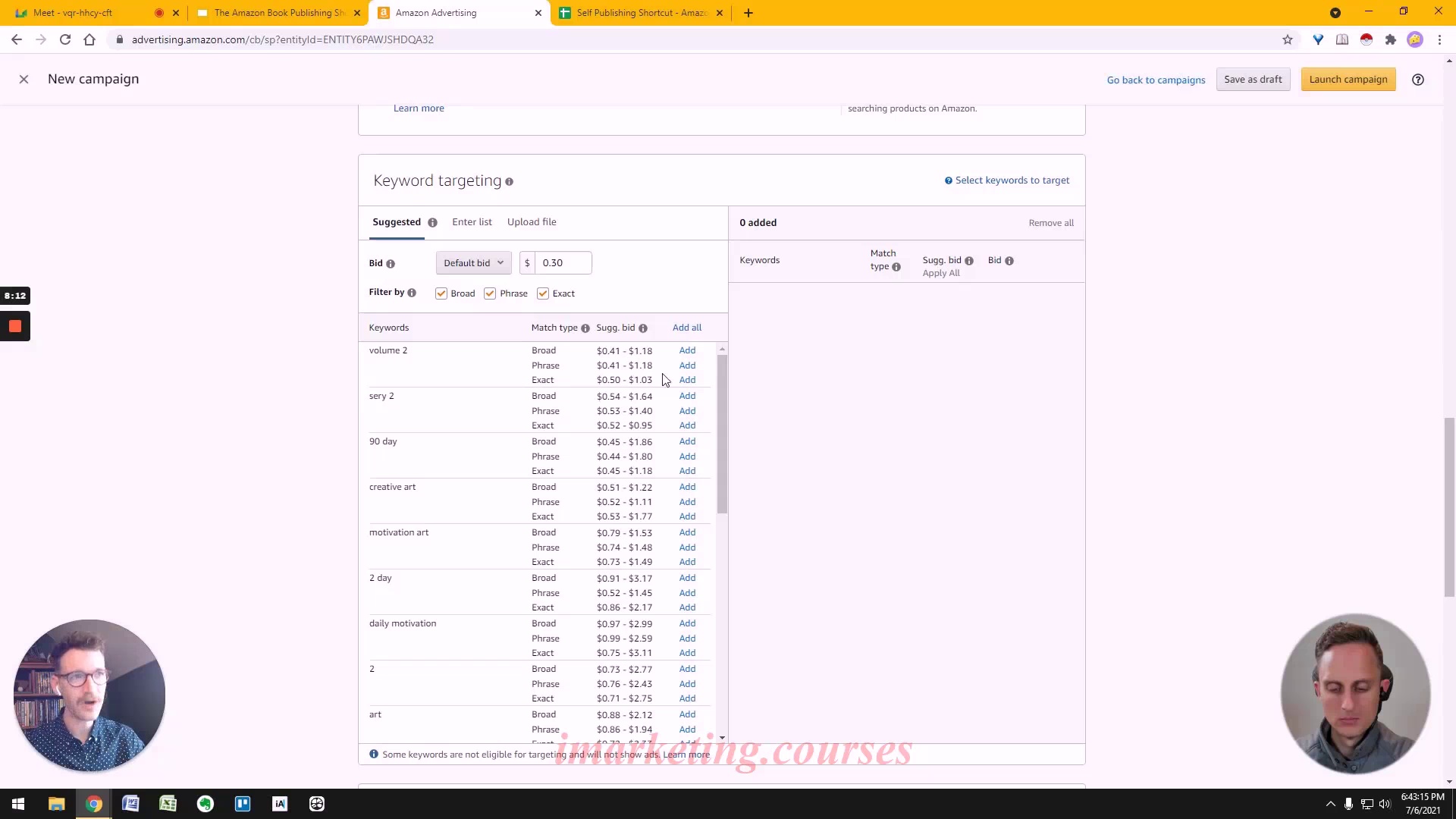
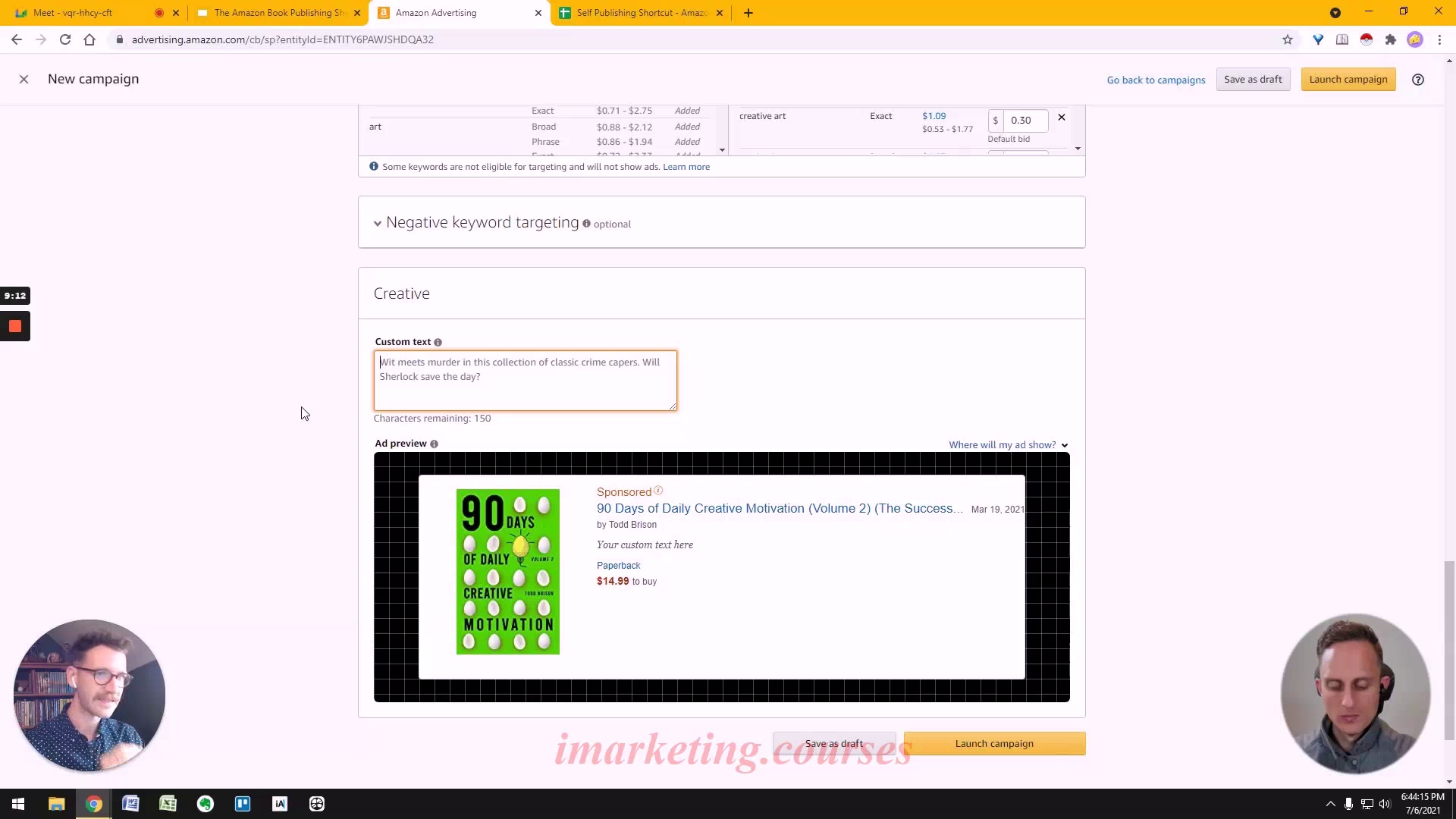
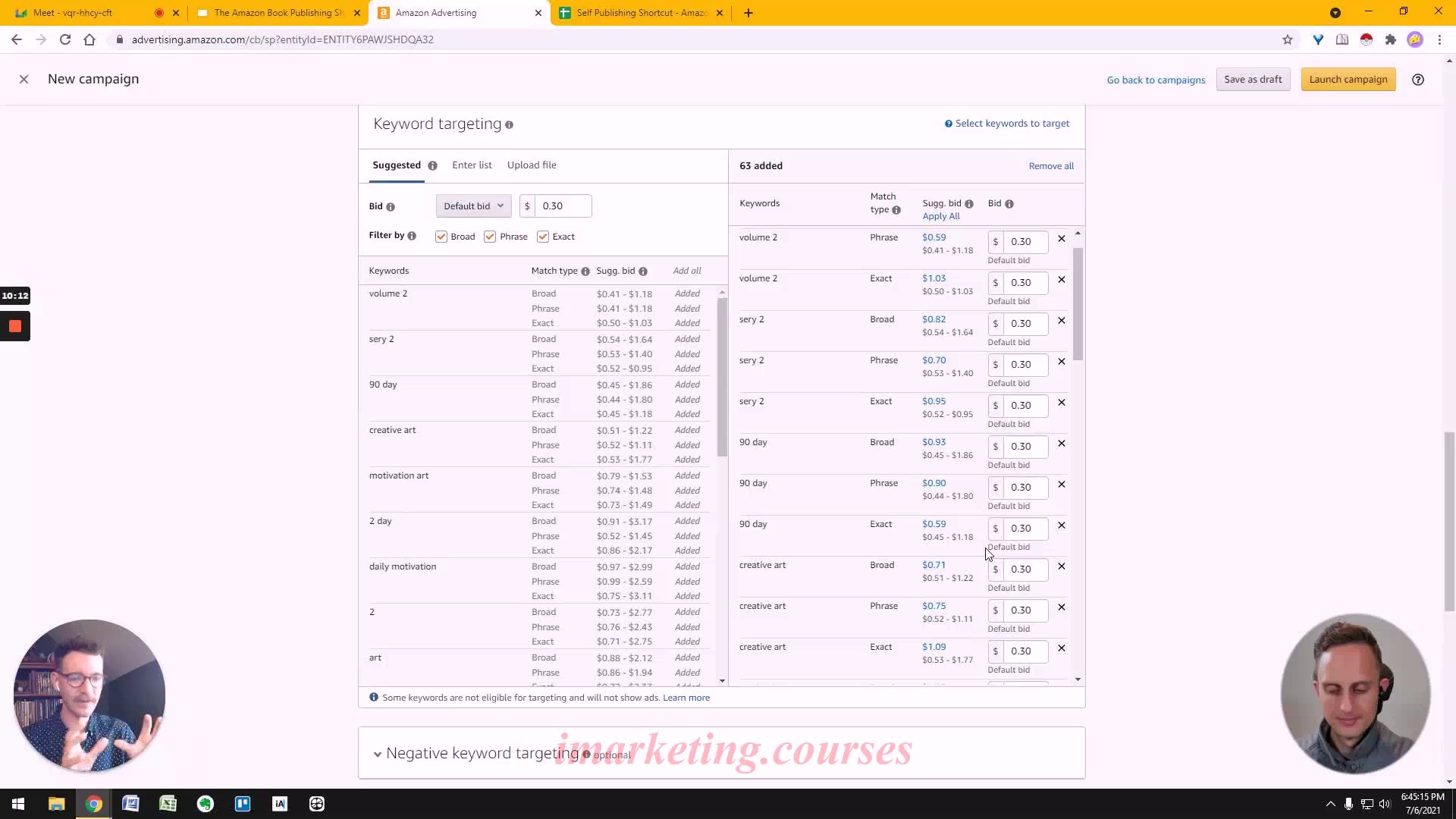
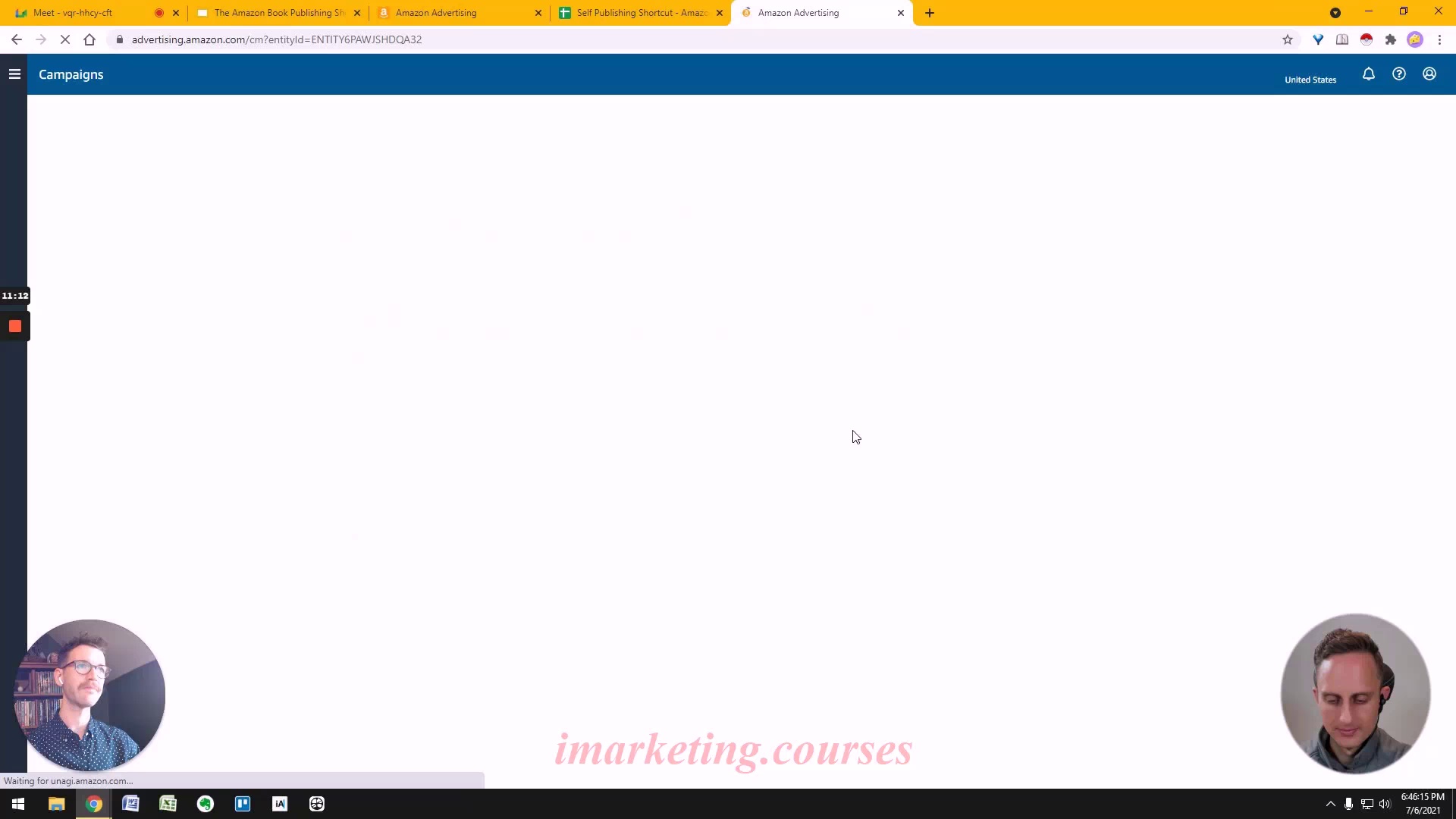
The narrator walks through setting up an Amazon sponsored products ad campaign step-by-step in the Amazon advertising dashboard. The goals are to set up a simple, low-risk campaign to get started and gather data.
The key steps include: - Choosing the "sponsored products" campaign type for the best return on investment - Naming the campaign with the book name, ad type, and date for organization - Setting a $5 daily budget and end date about 3 weeks out to encourage spending - Using manual targeting and dynamic bids for control - Adding suggested keywords at a $0.30 bid for breadth - Creating a simple text ad following the "this book helps X do Y" format - Launching the campaign and monitoring performance data over time
The idea is to start very basic to get experience with minimal risk, then iterate and optimize based on performance data.
.Tim-D-AmazonBookPubl Misc 2 to 3 - Part 2












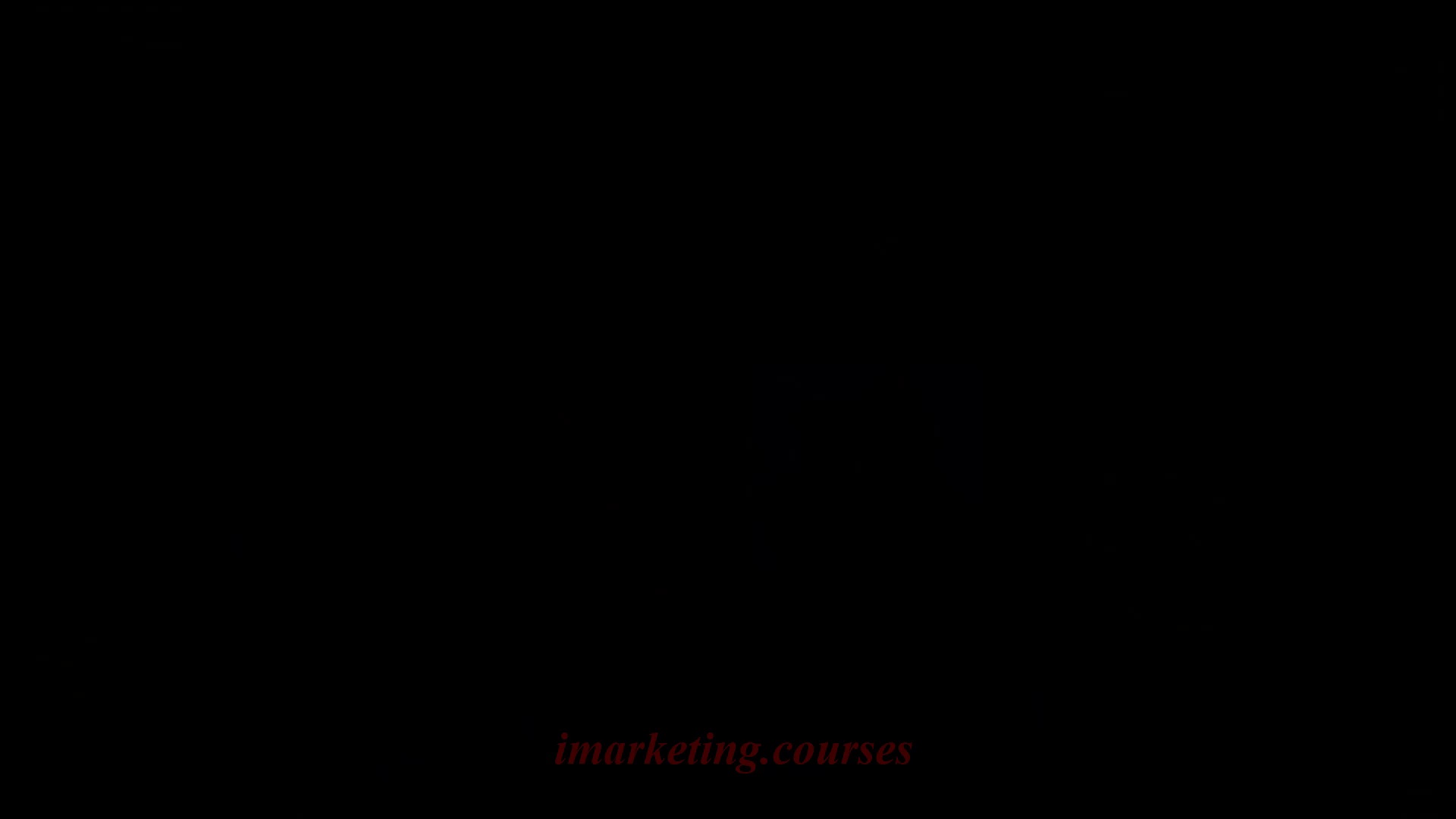
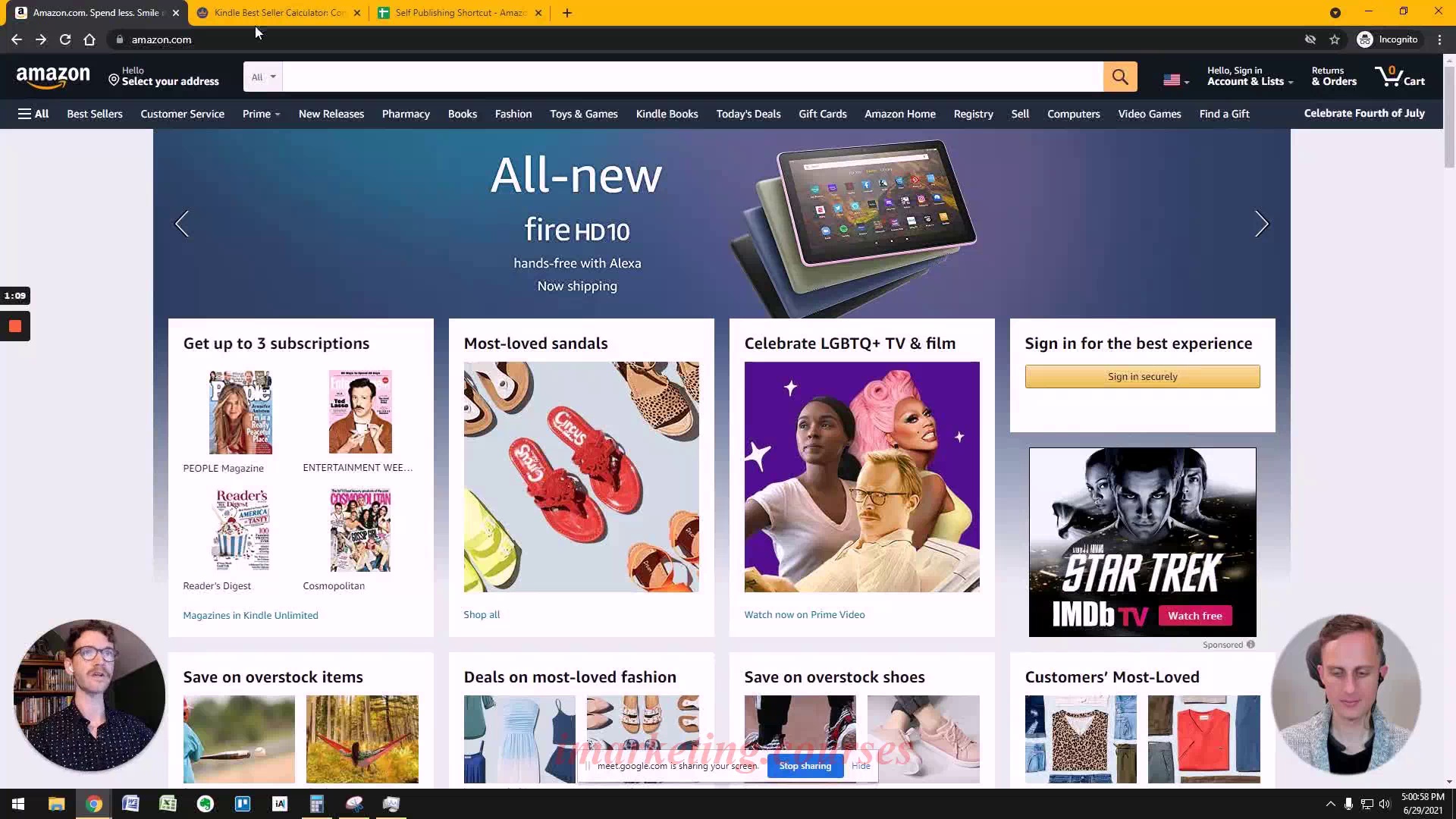
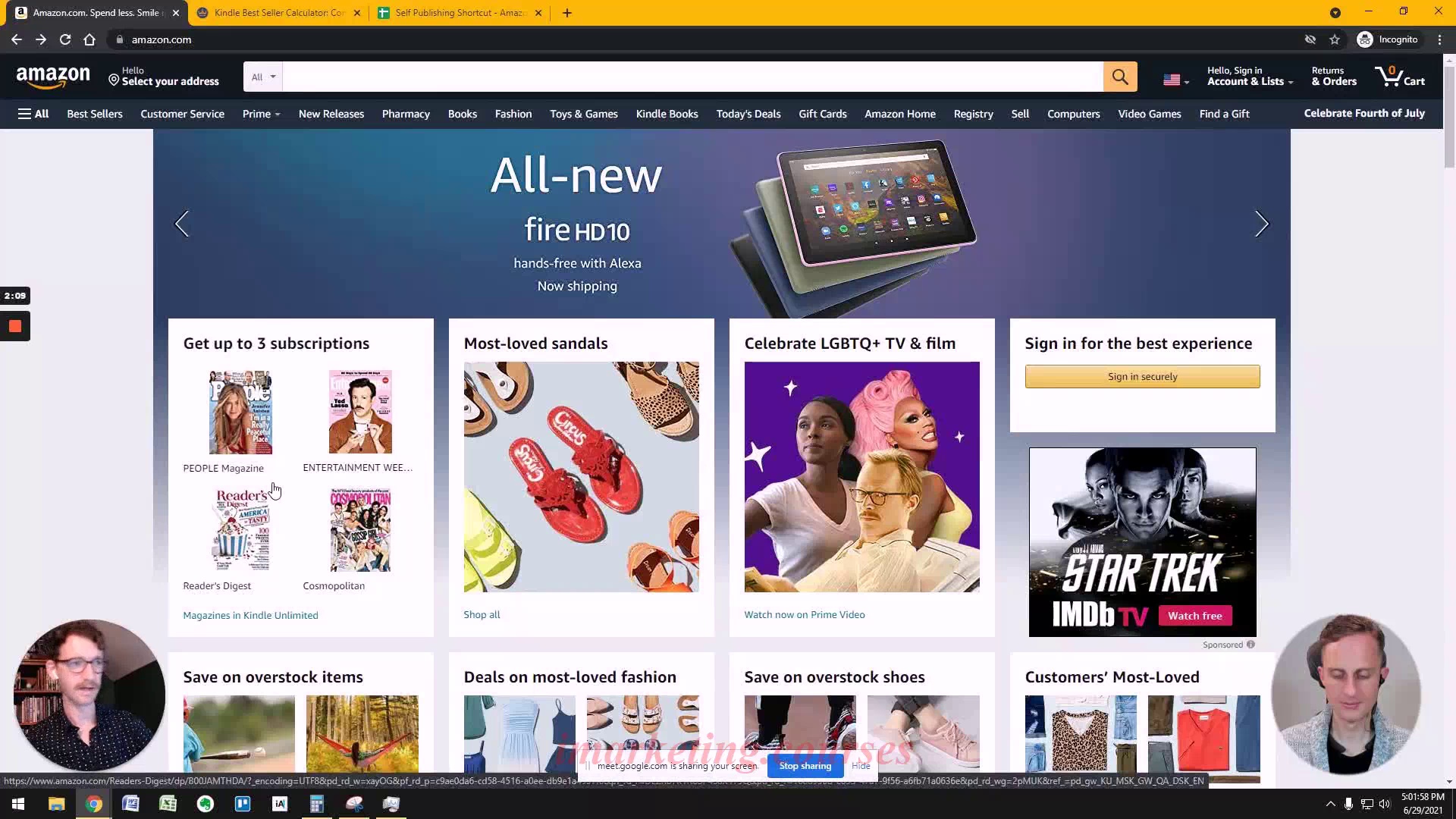


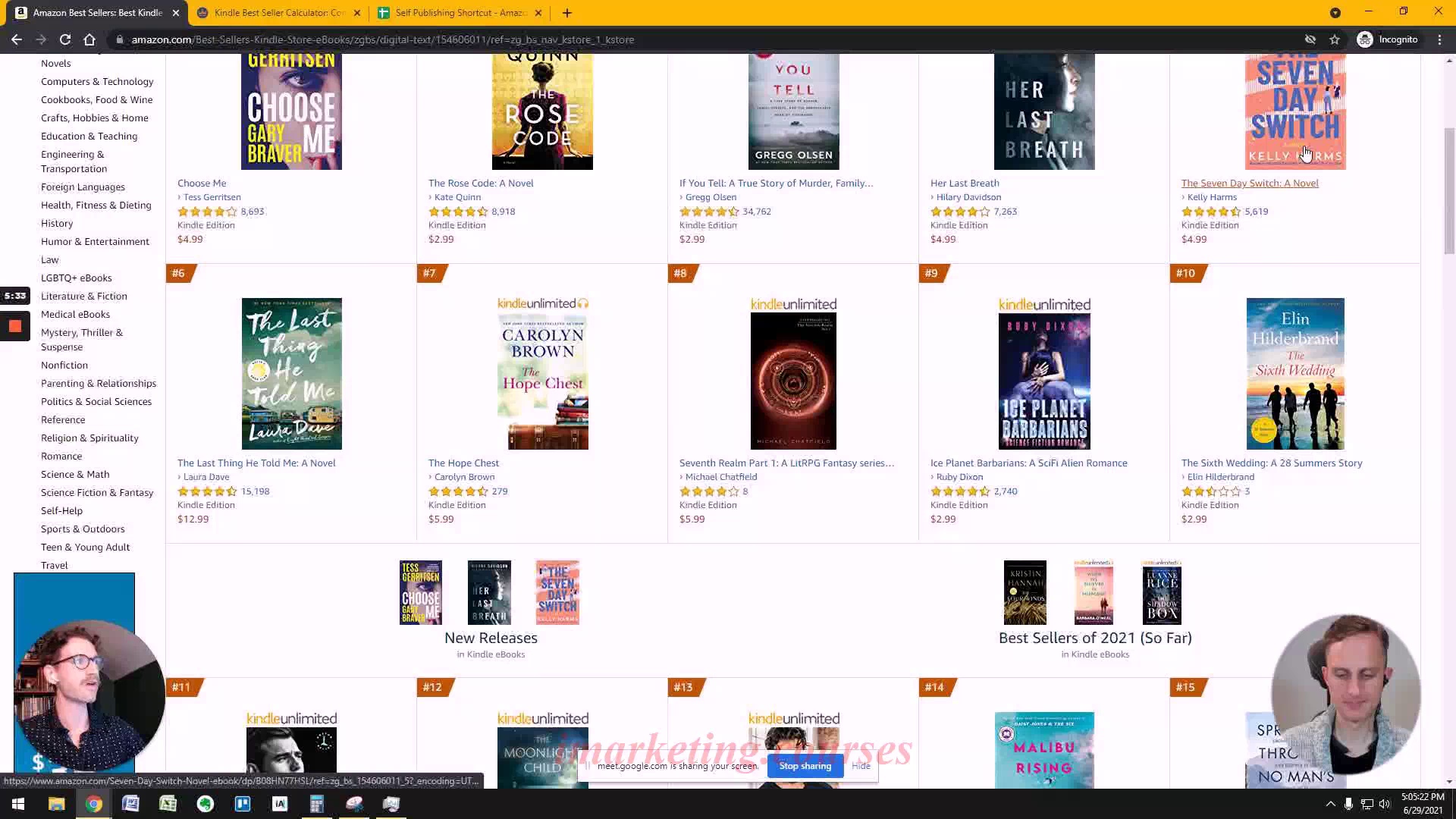
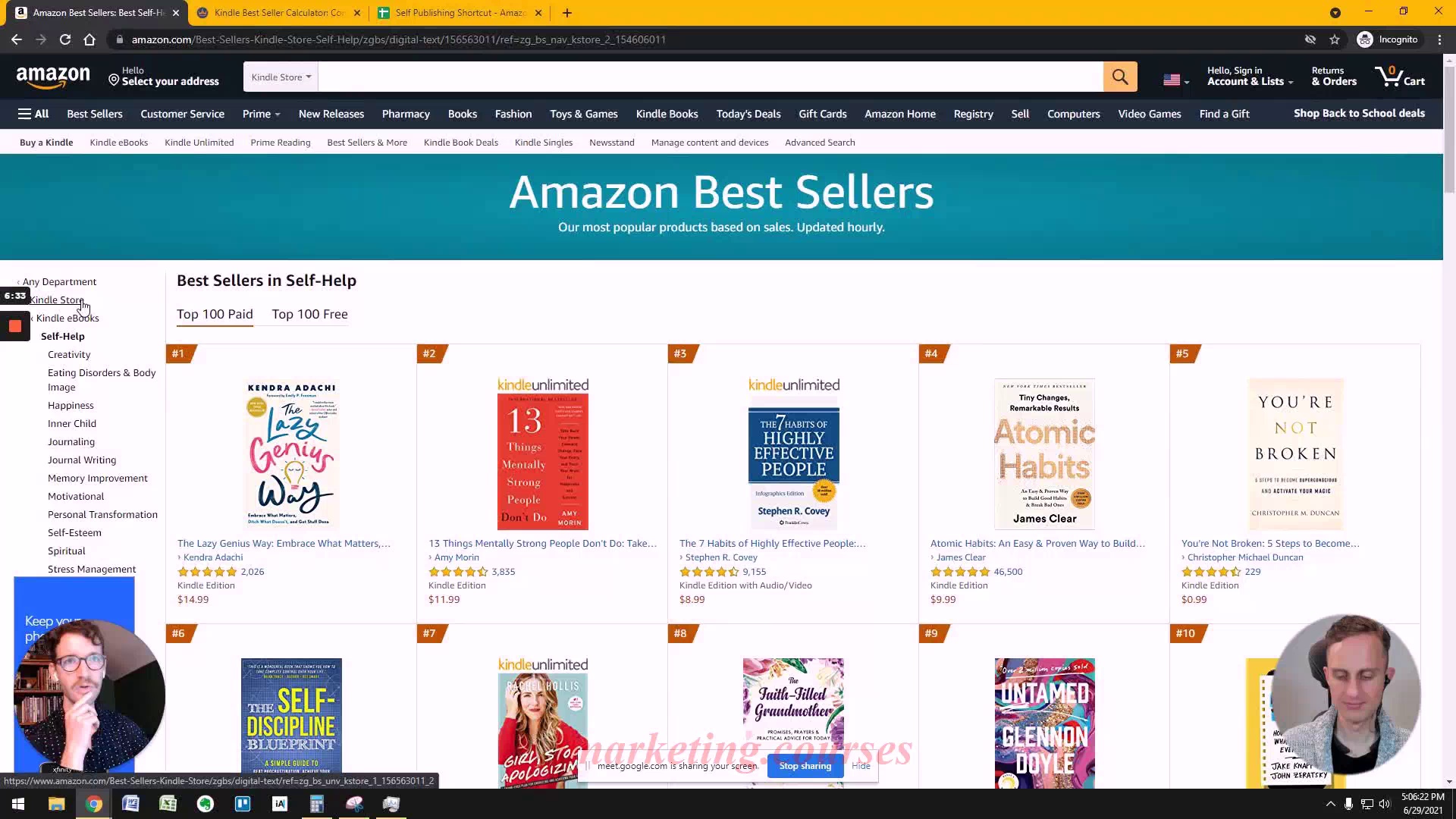
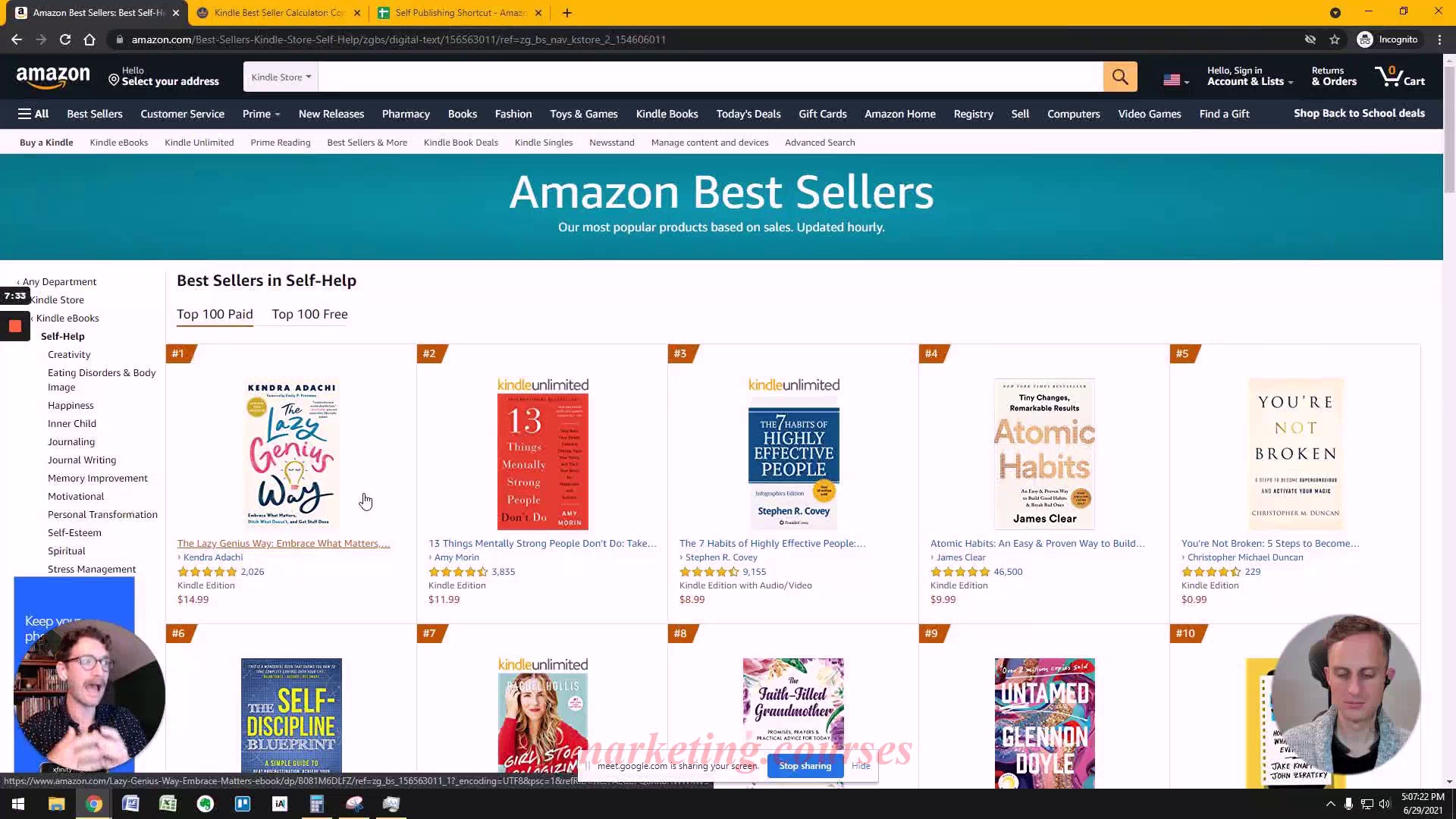
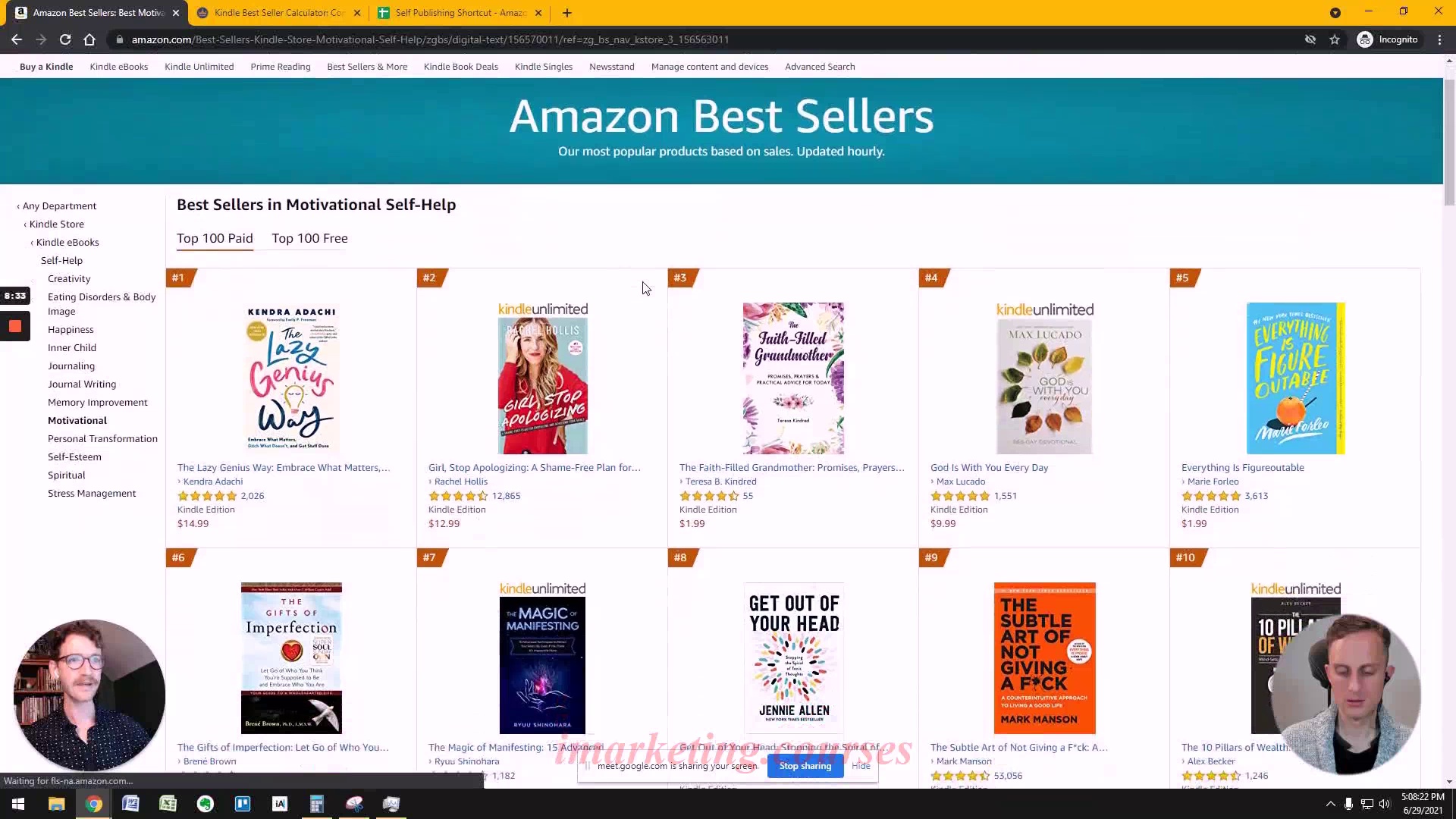
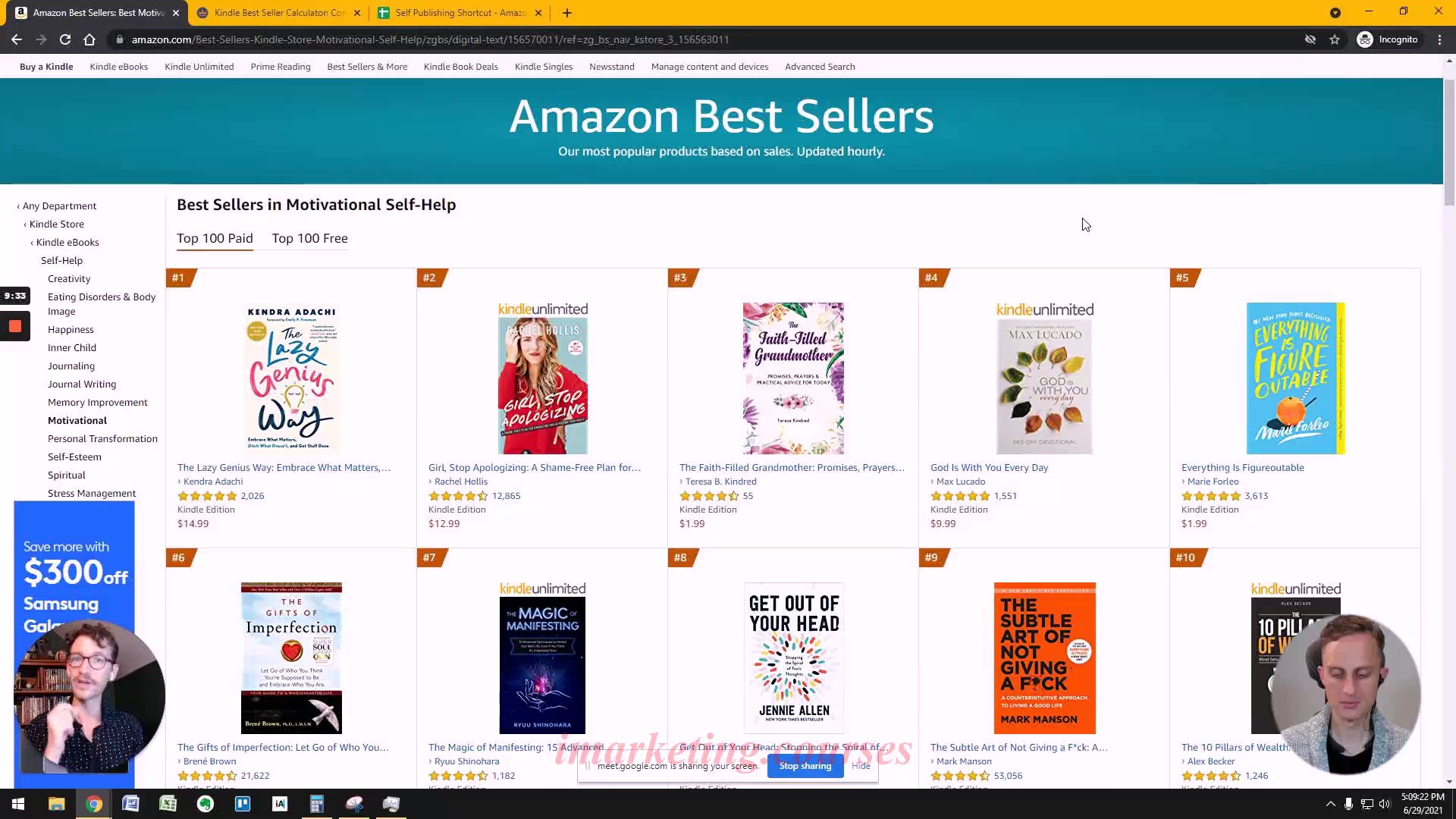
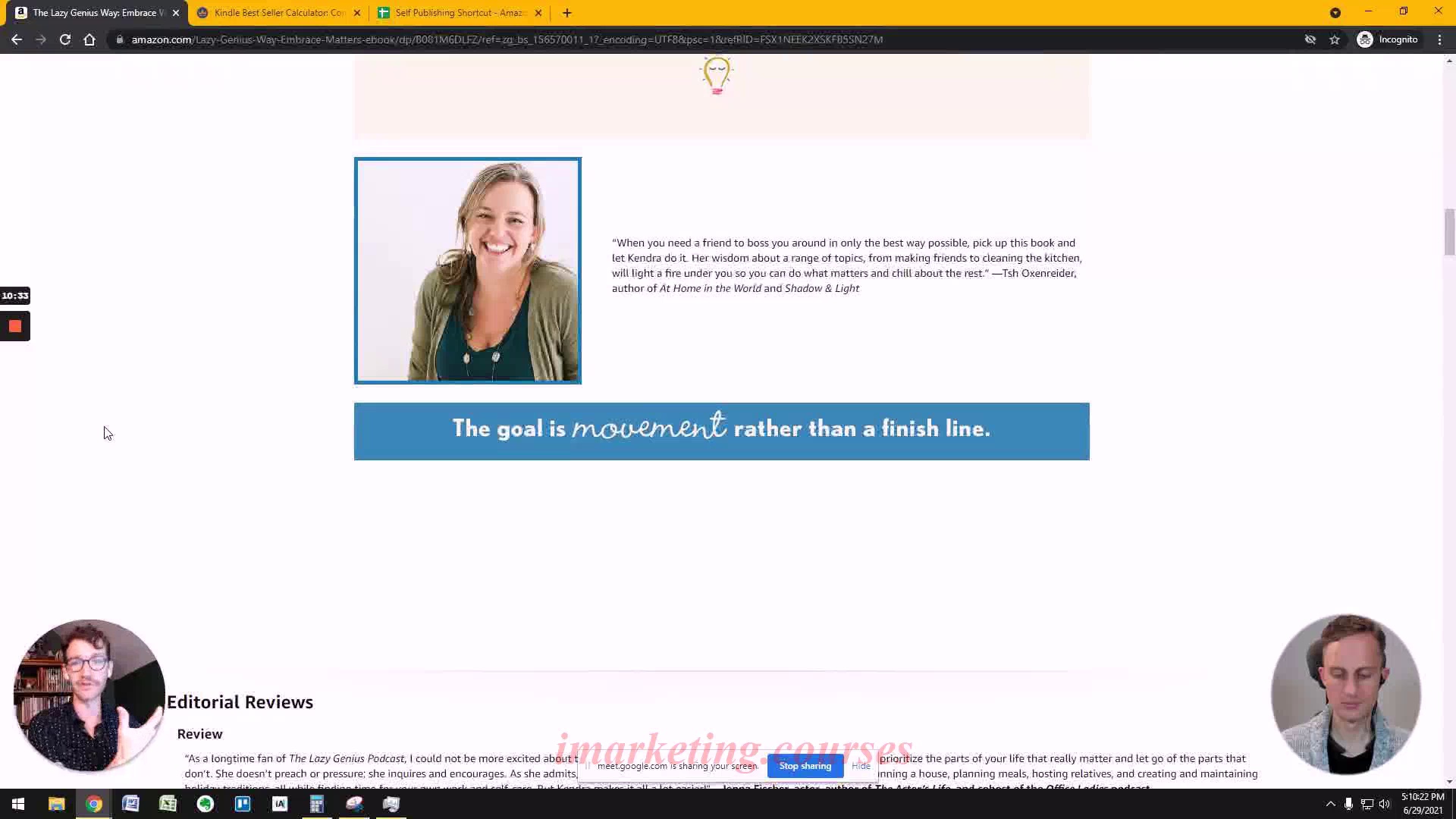
The narrator explains how to determine if there is demand for a book idea using Amazon's category structure and sales data. He shows how categories are organized in trees with subcategories. Books can appear in multiple categories with different sales rankings in each.
His guest, Tim, wants to write in the self-help genre. The narrator advises starting in a smaller, more targeted subcategory instead of the broad self-help category where there is a lot of competition. He explains how to research categories:
- Click into a book and scroll down to see its rankings across categories.
- See if a top book spans both a broad and narrower category, signaling high demand.
- Consider writing for a less competitive subcategory first to build momentum before expanding.
The goal is to make strategic category choices so your book gets discovered instead of buried. The narrator stresses the importance of researching categories to inform publishing decisions.
.Tim-D-AmazonBookPubl Misc 2 to 3 - Part 3























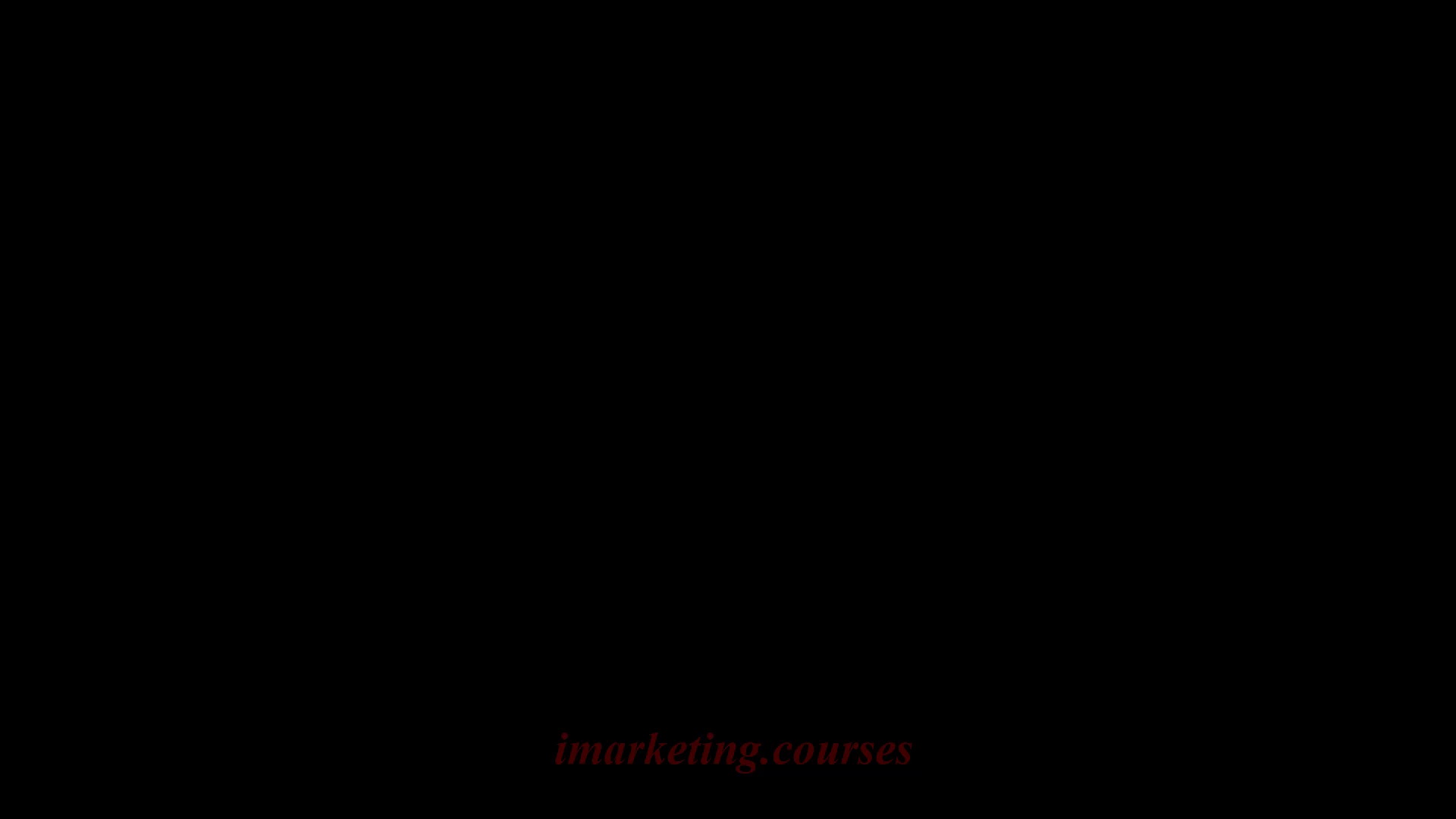
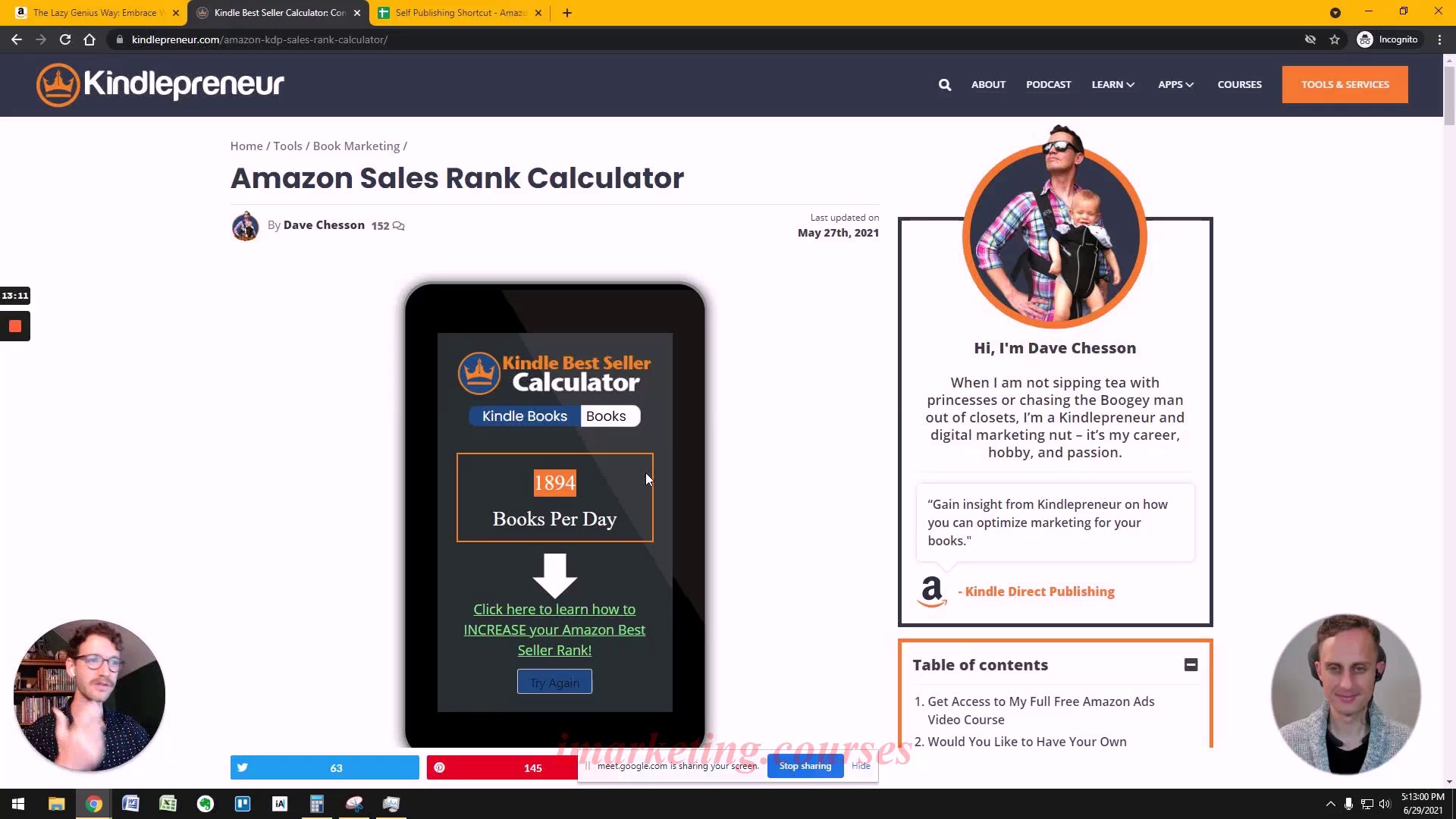


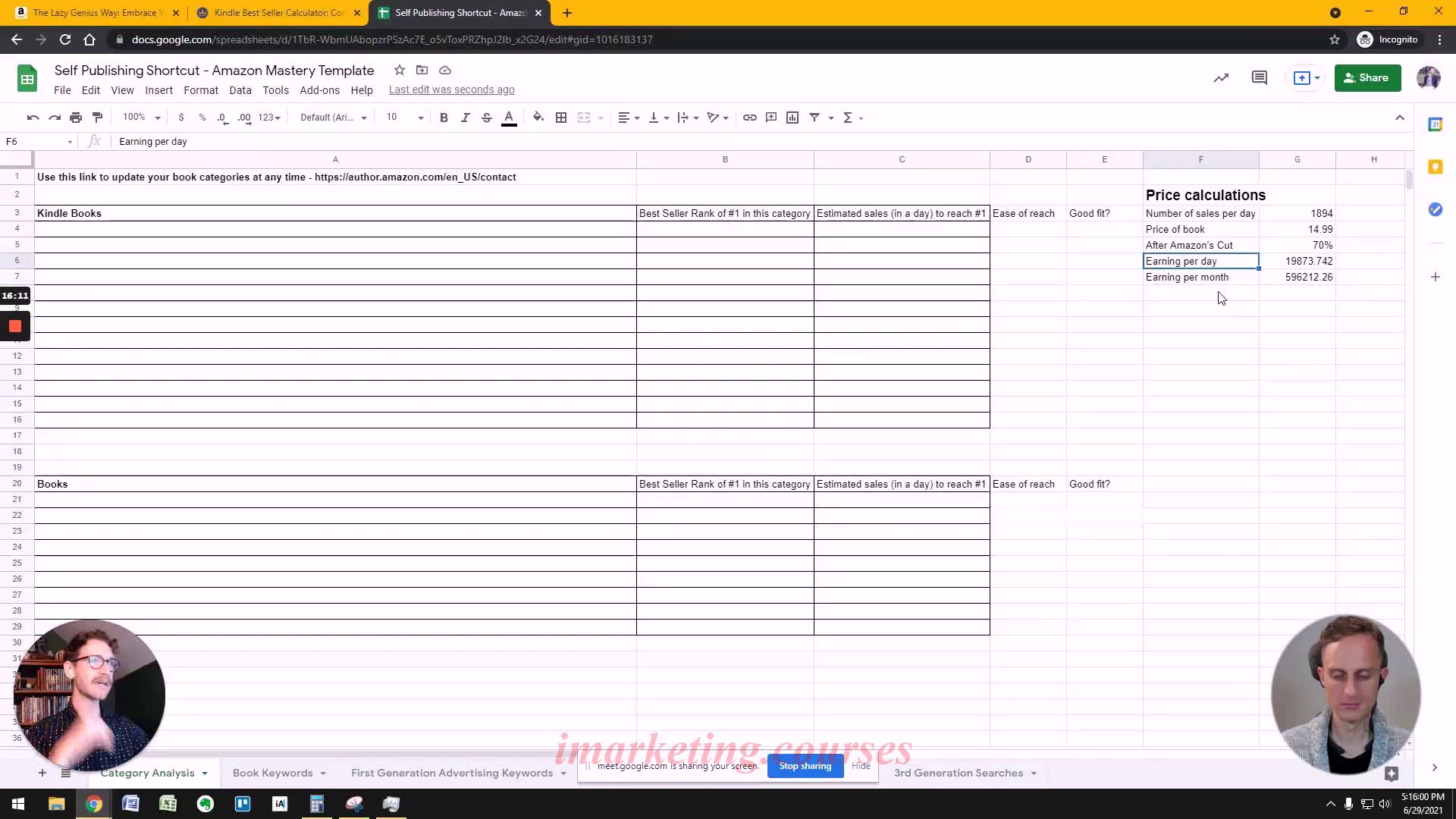

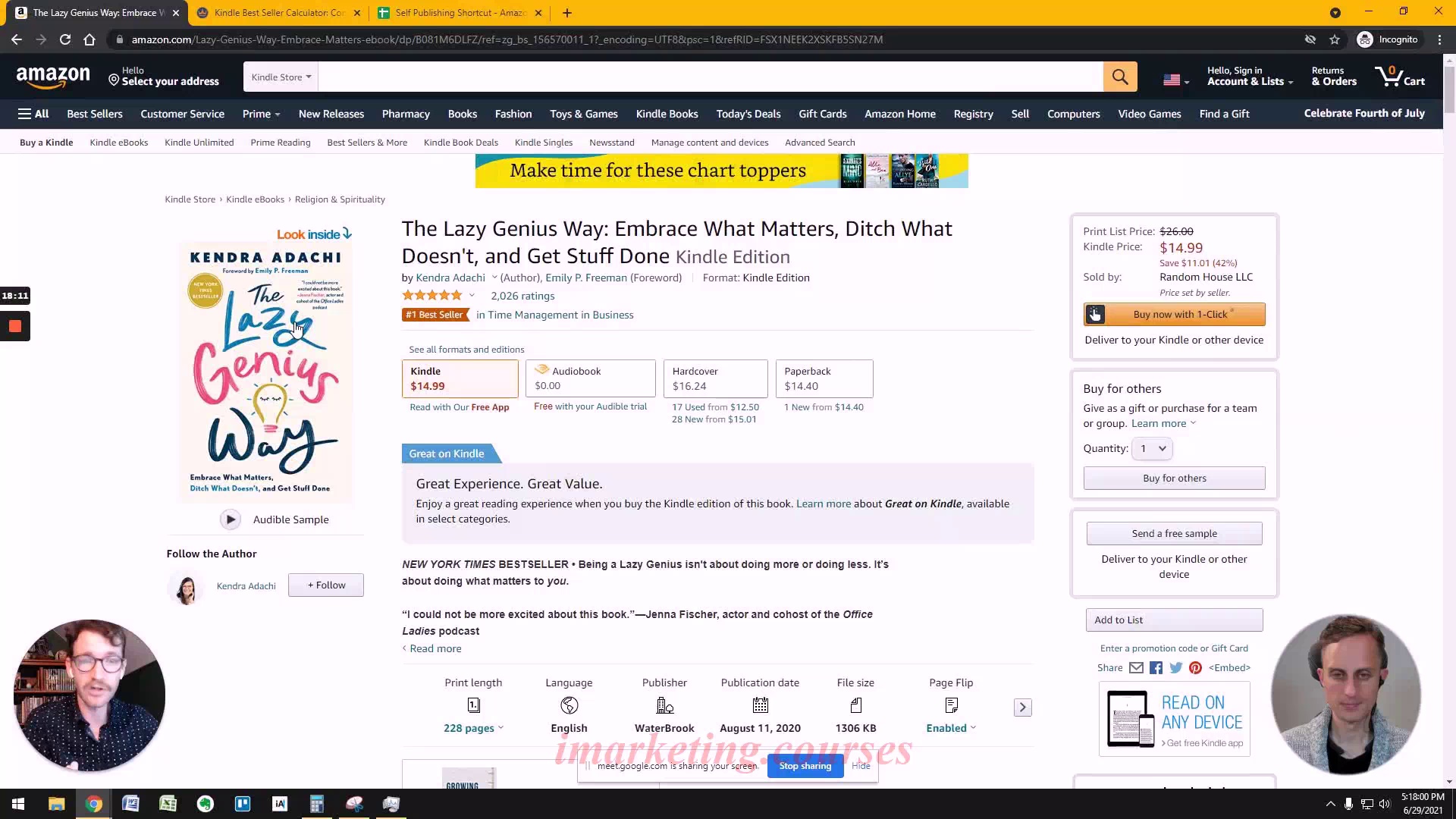
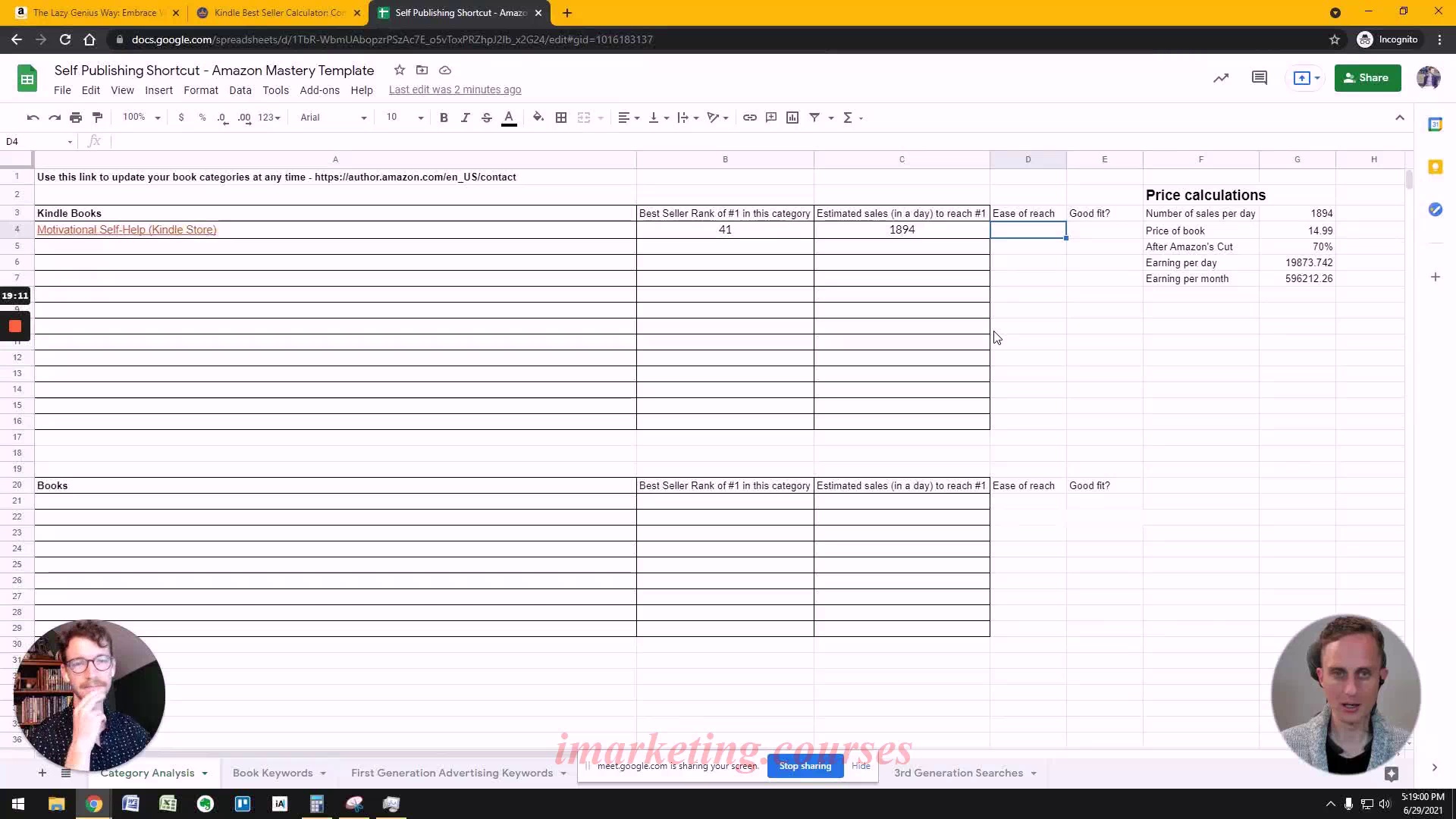

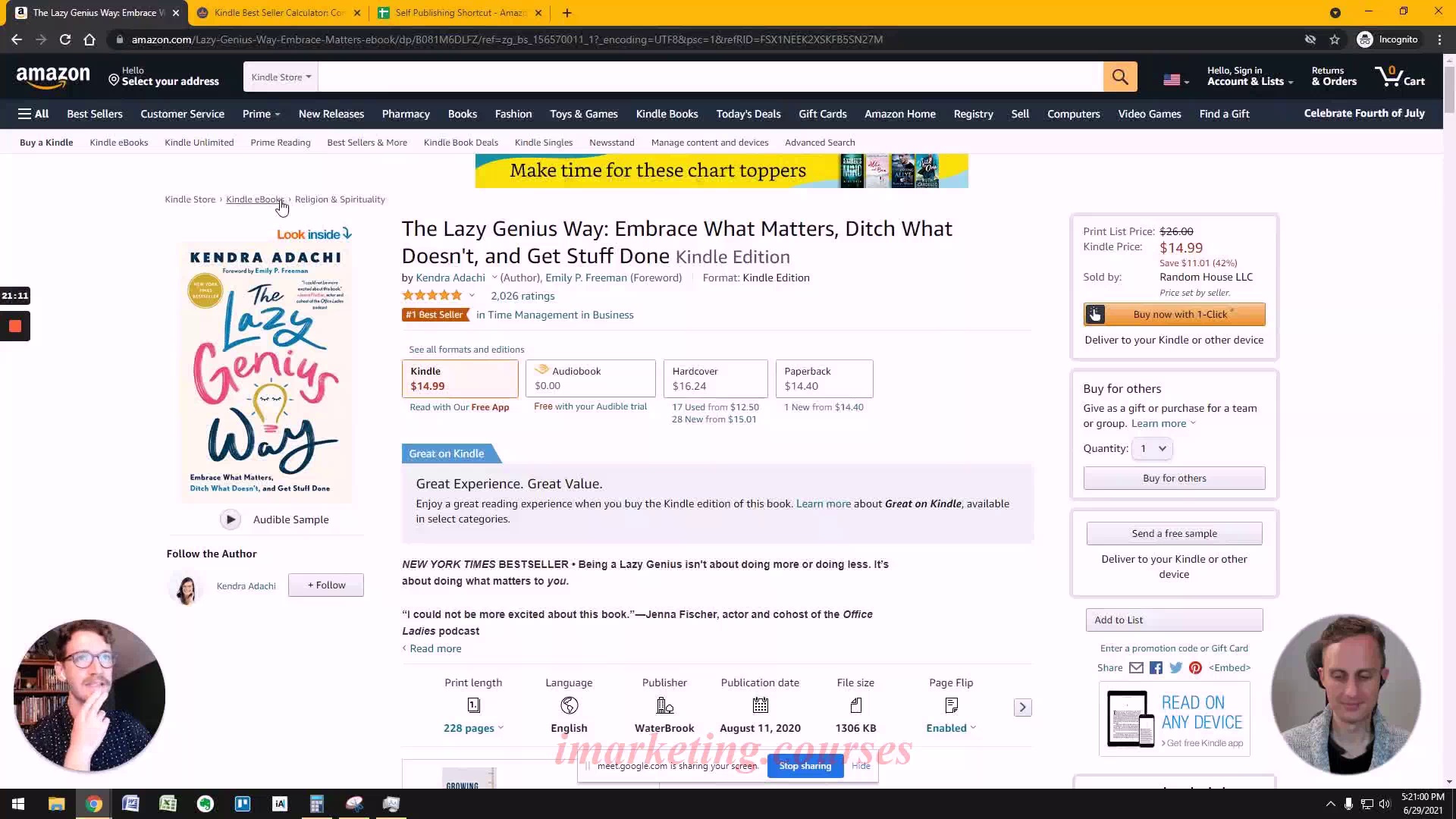
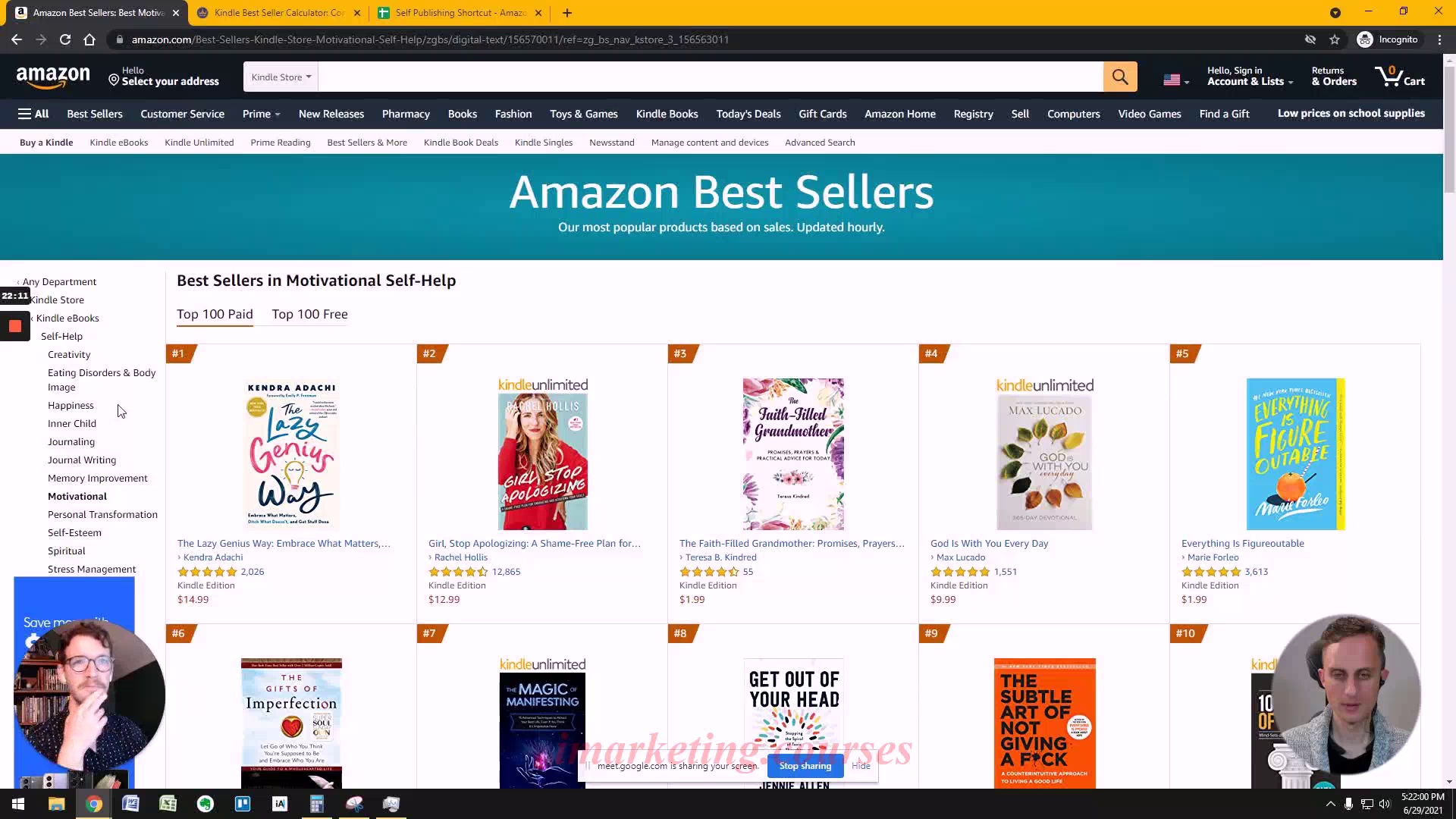
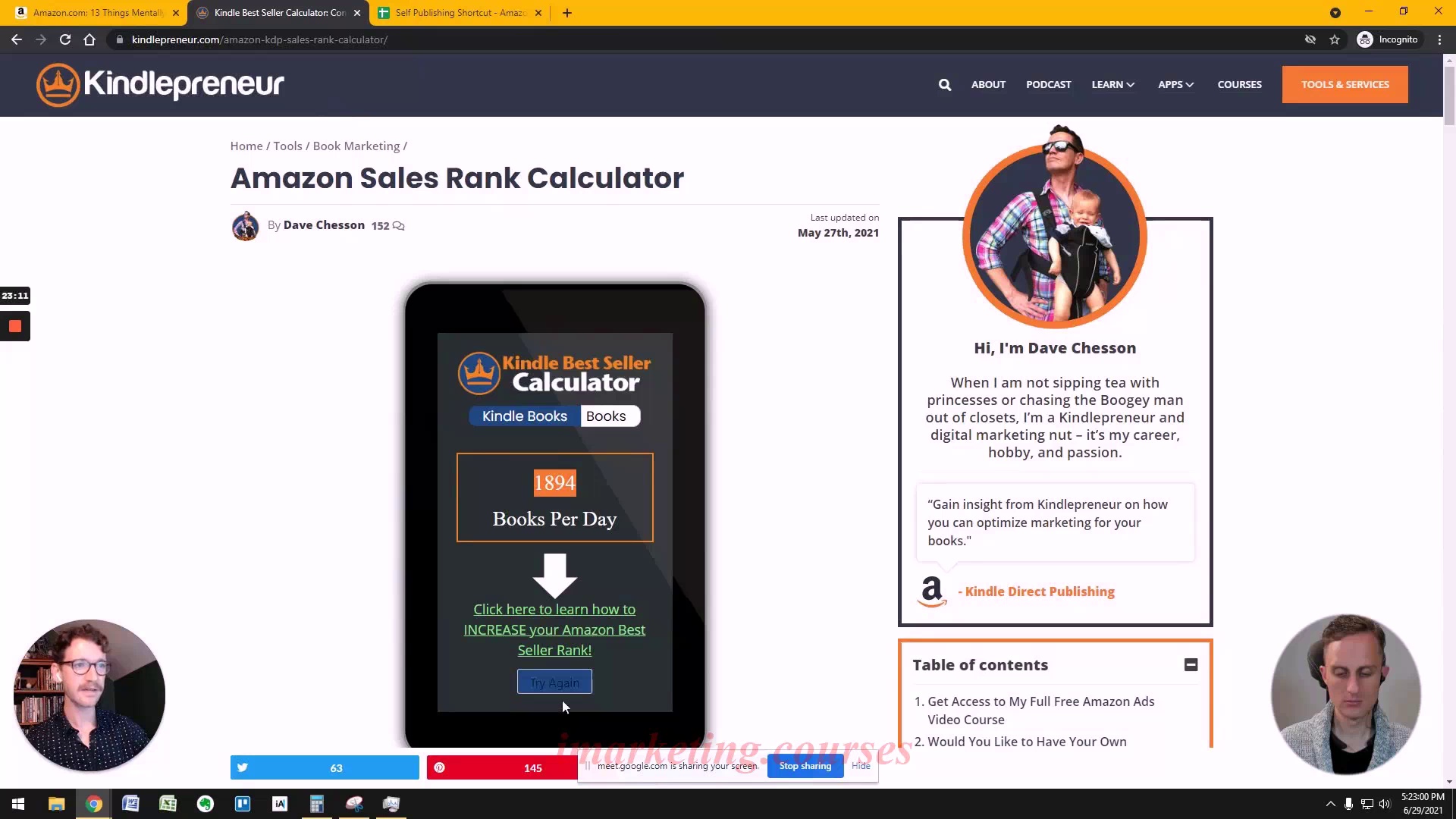
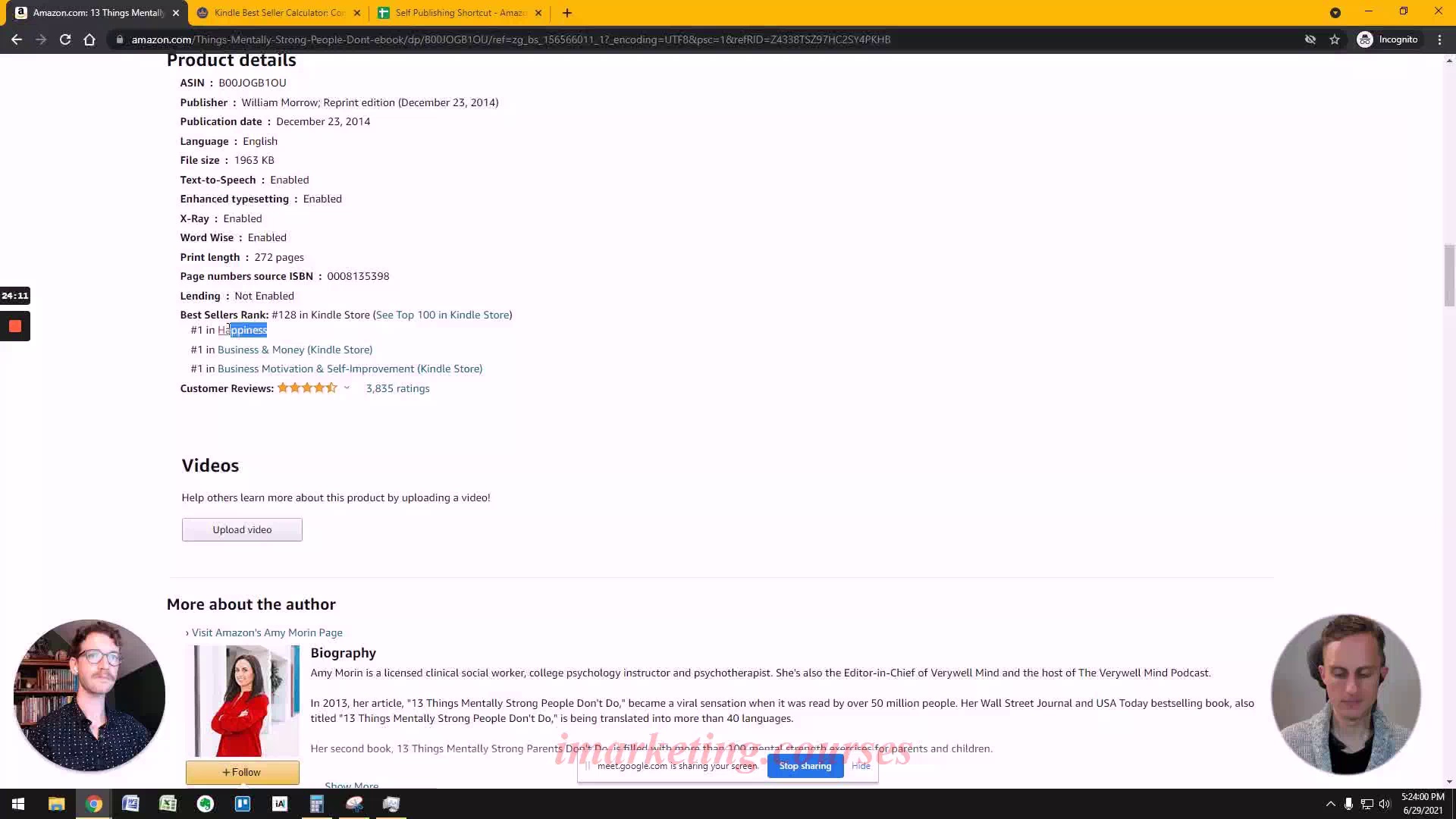
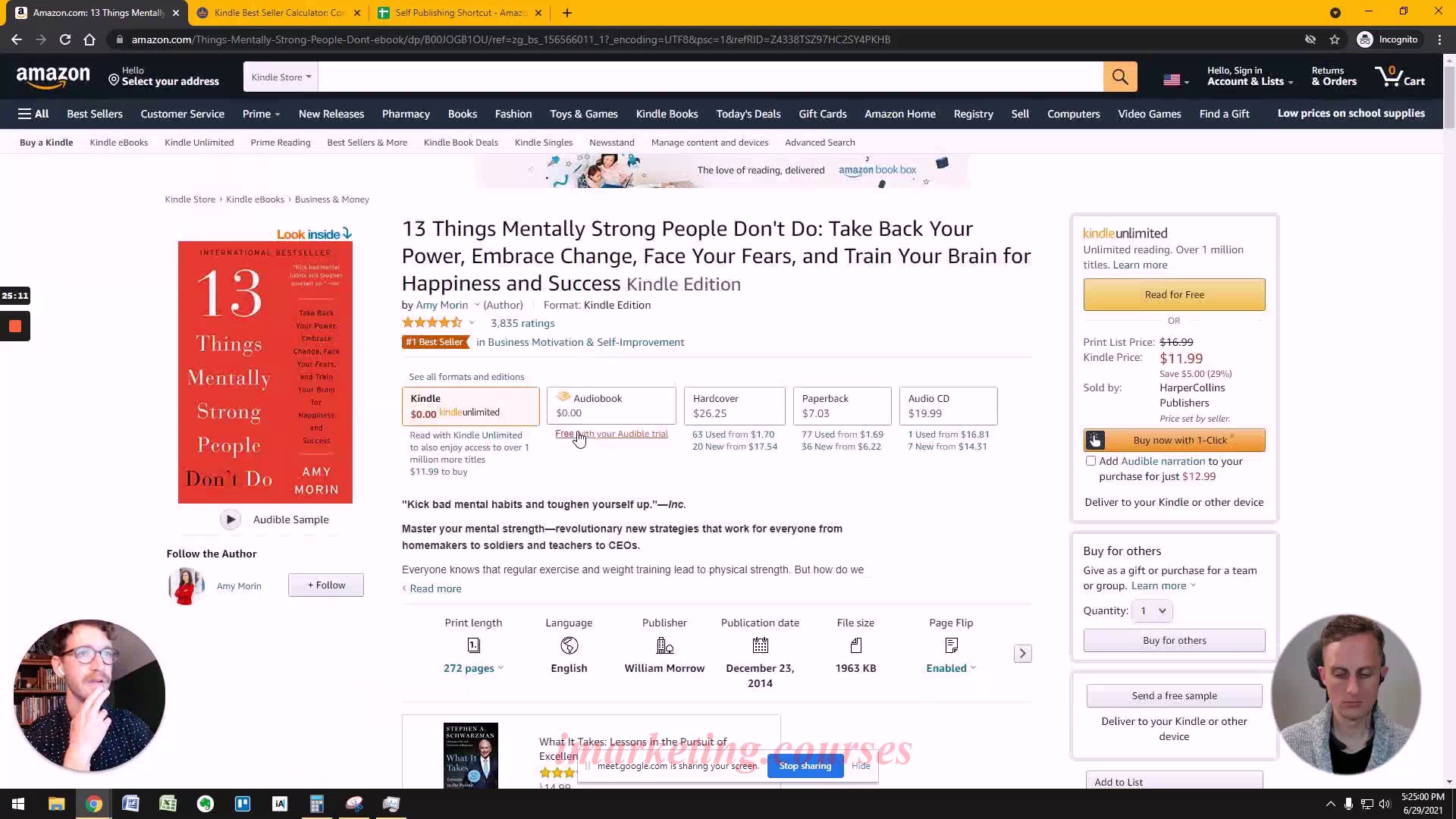
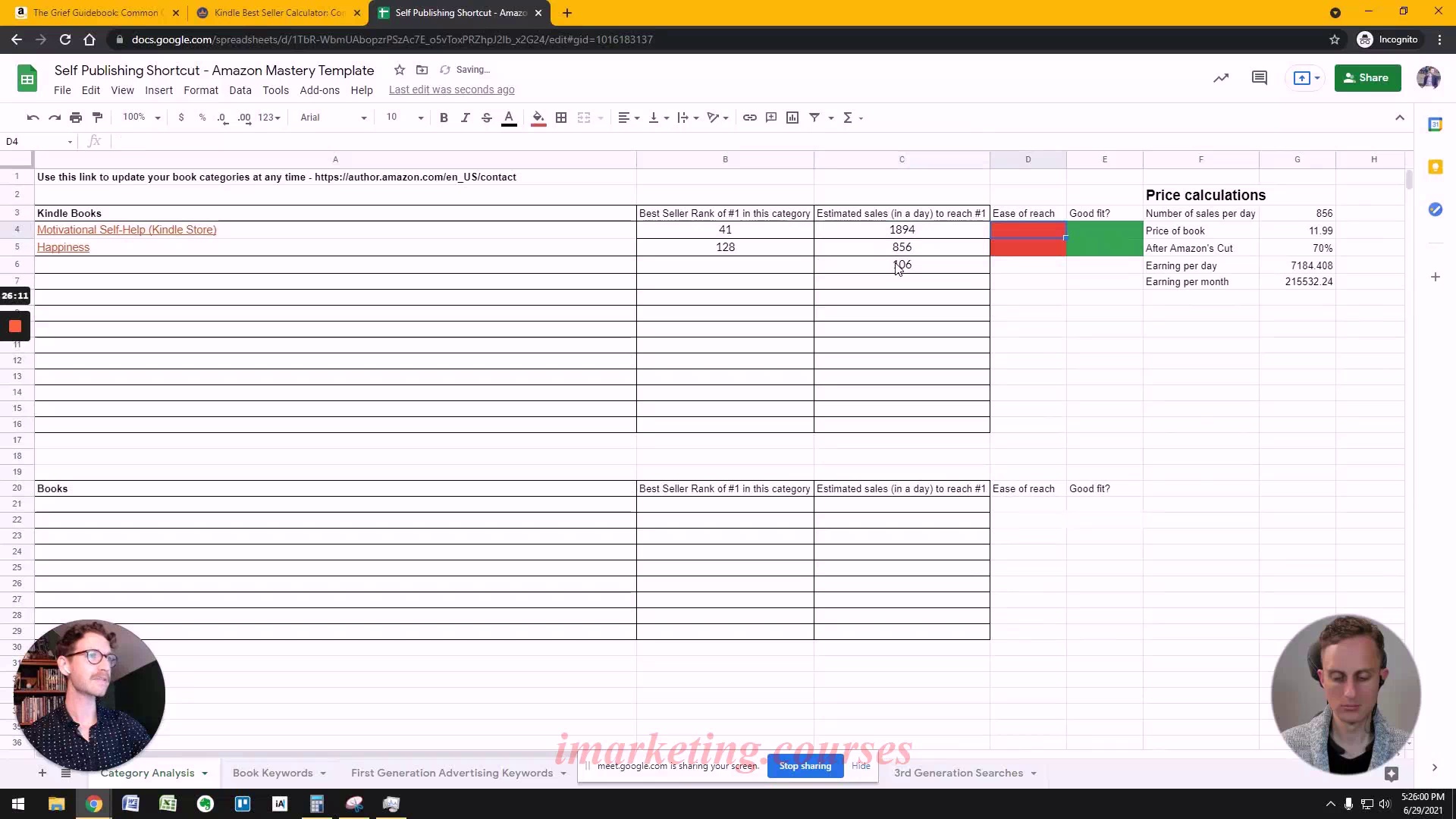
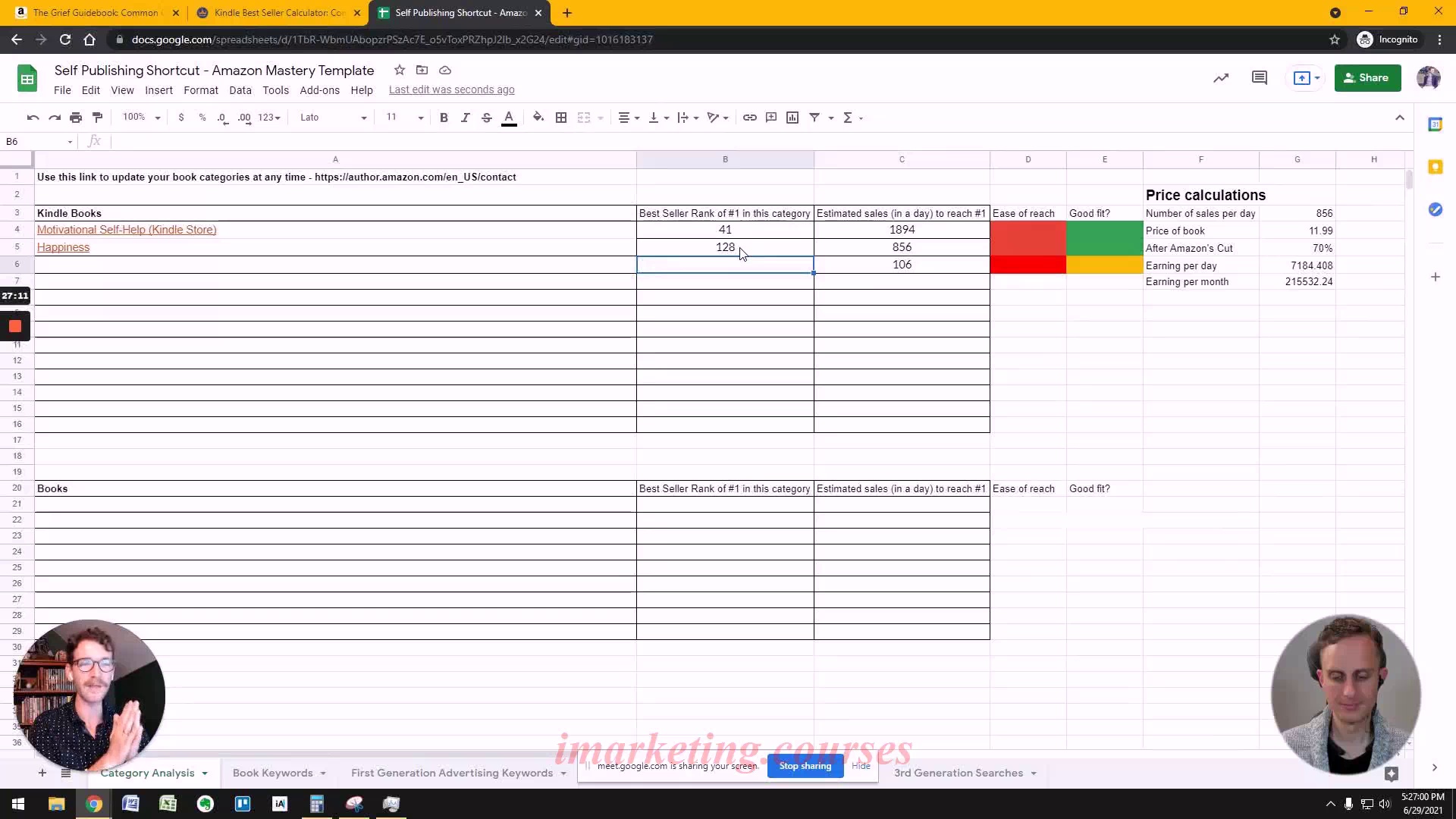
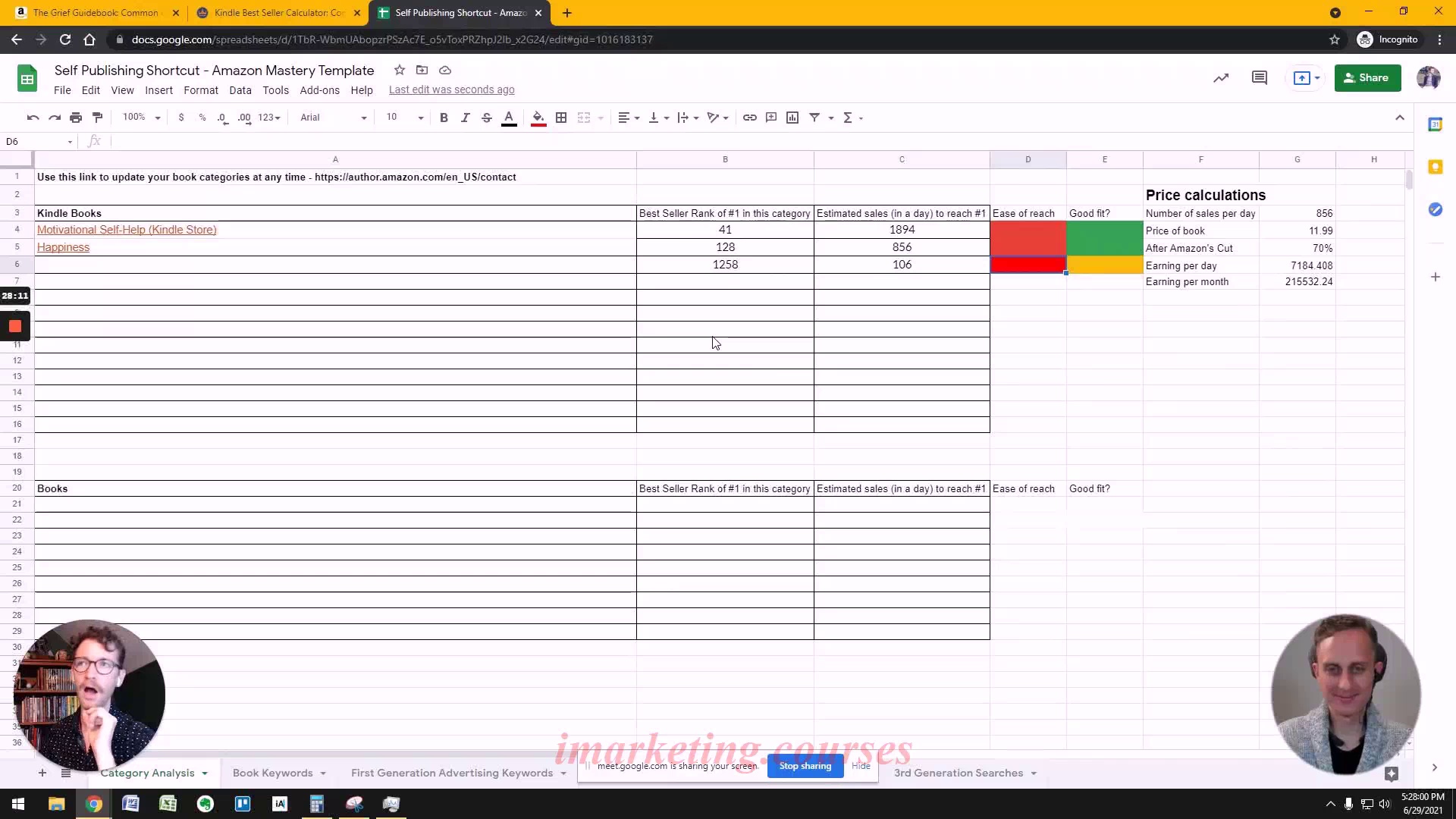
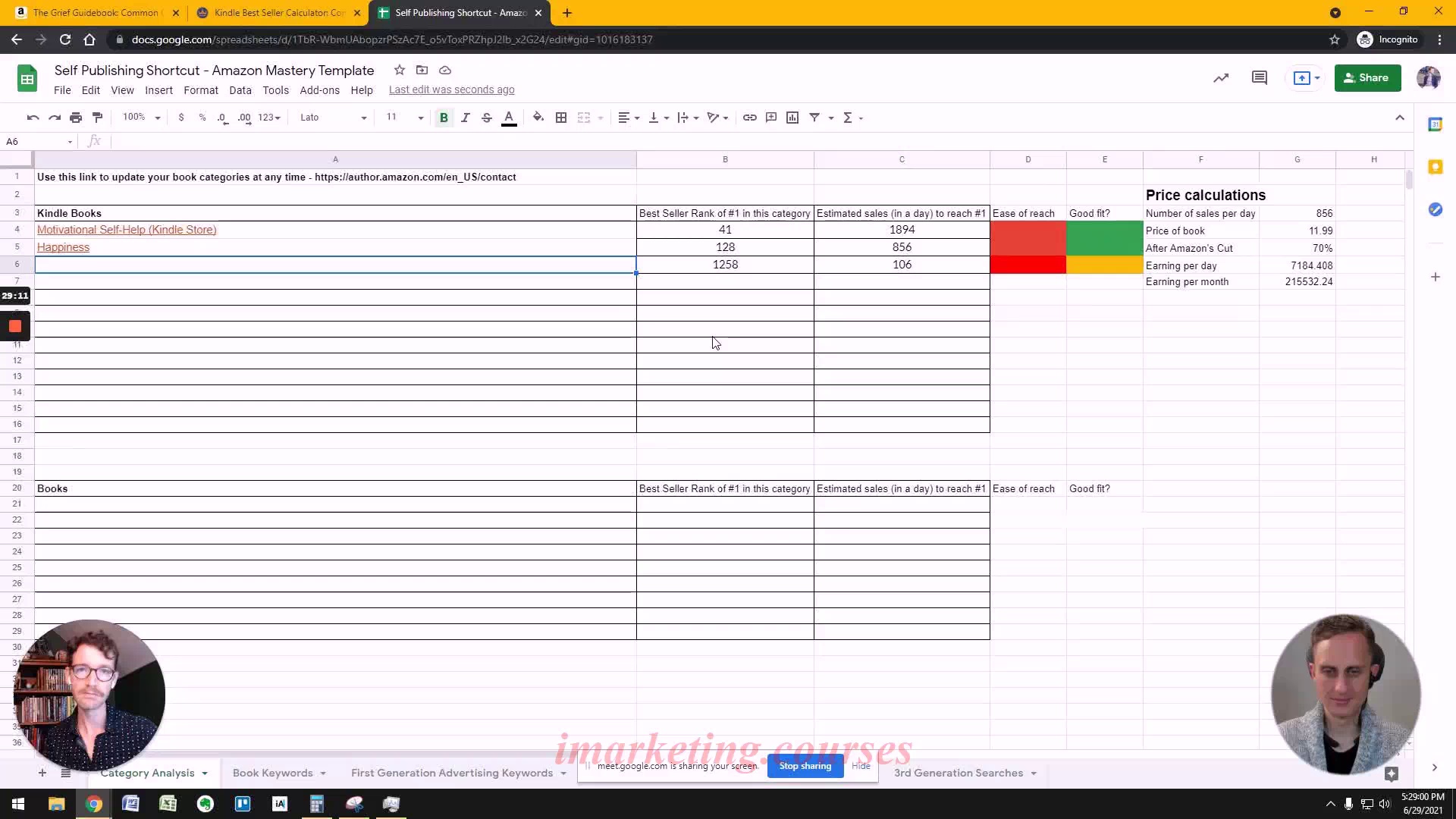
The narrator explains how to research categories on Amazon to determine the potential sales and earnings for a book. Using a sales estimation tool, the narrator looks at the bestselling book in the Motivational Self-Help category, which ranks #41 overall. It sells about 1,894 books per day, earning around $19,000 daily. This shows it is crowded and would be hard for a new author to break in. Next, the narrator analyzes Happiness and Stress Management categories, finding less competition. The bestsellers rank #128 and #1,258 overall, selling 856 and 106 books daily. These smaller numbers indicate a better chance to reach bestseller status. However, selling over 100 books a day still seems hard for a new author. The categories should reasonably match the book's content. The narrator recommends choosing anywhere from yellow (medium relevance) to green (highly relevant). He once tested putting a creativity book in a fly fishing category and got removed. Overall, it is best to get in as many reasonably-fitting categories as possible.
.Tim-D-AmazonBookPubl Misc 2 to 3 - Part 4









































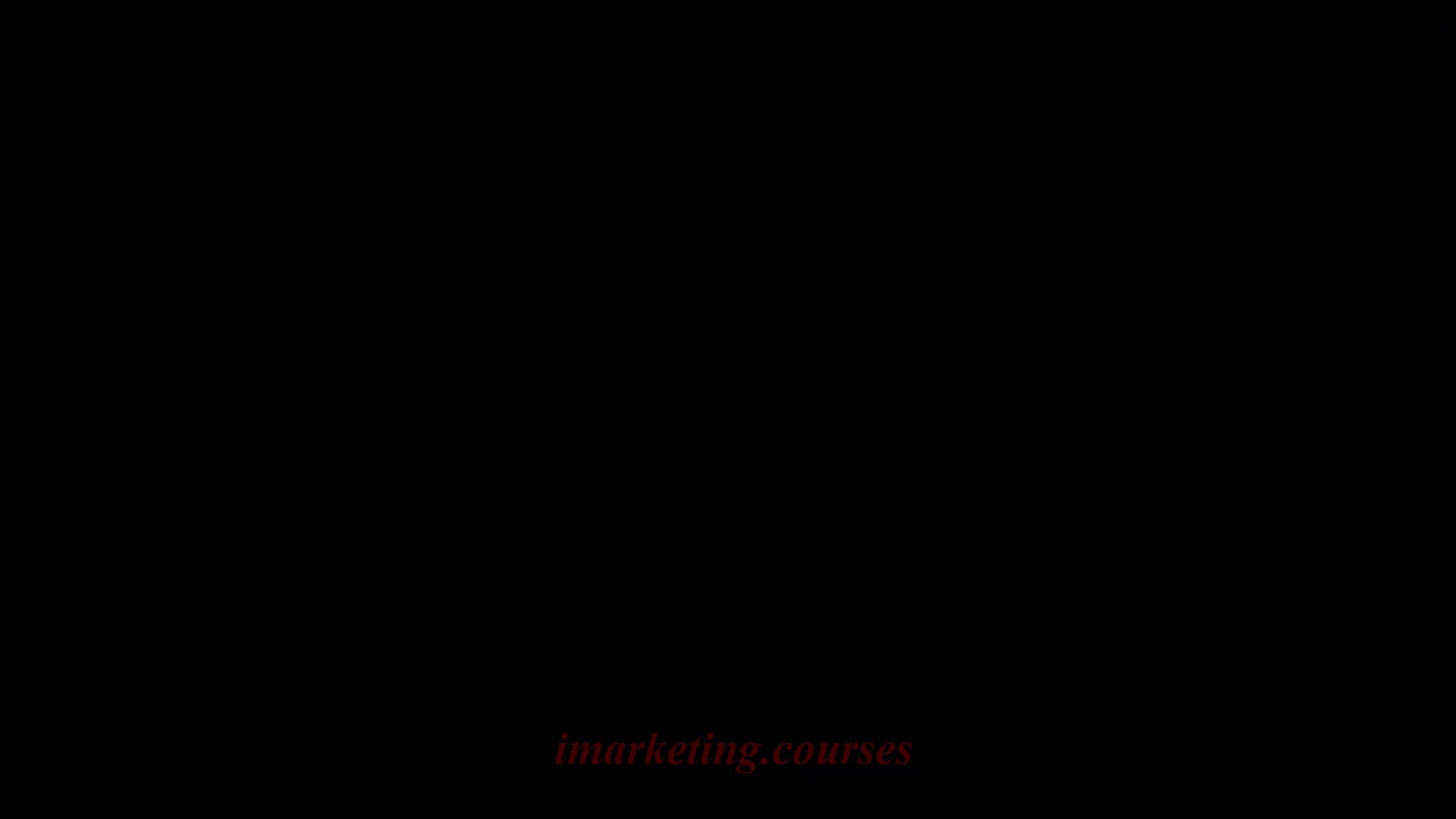

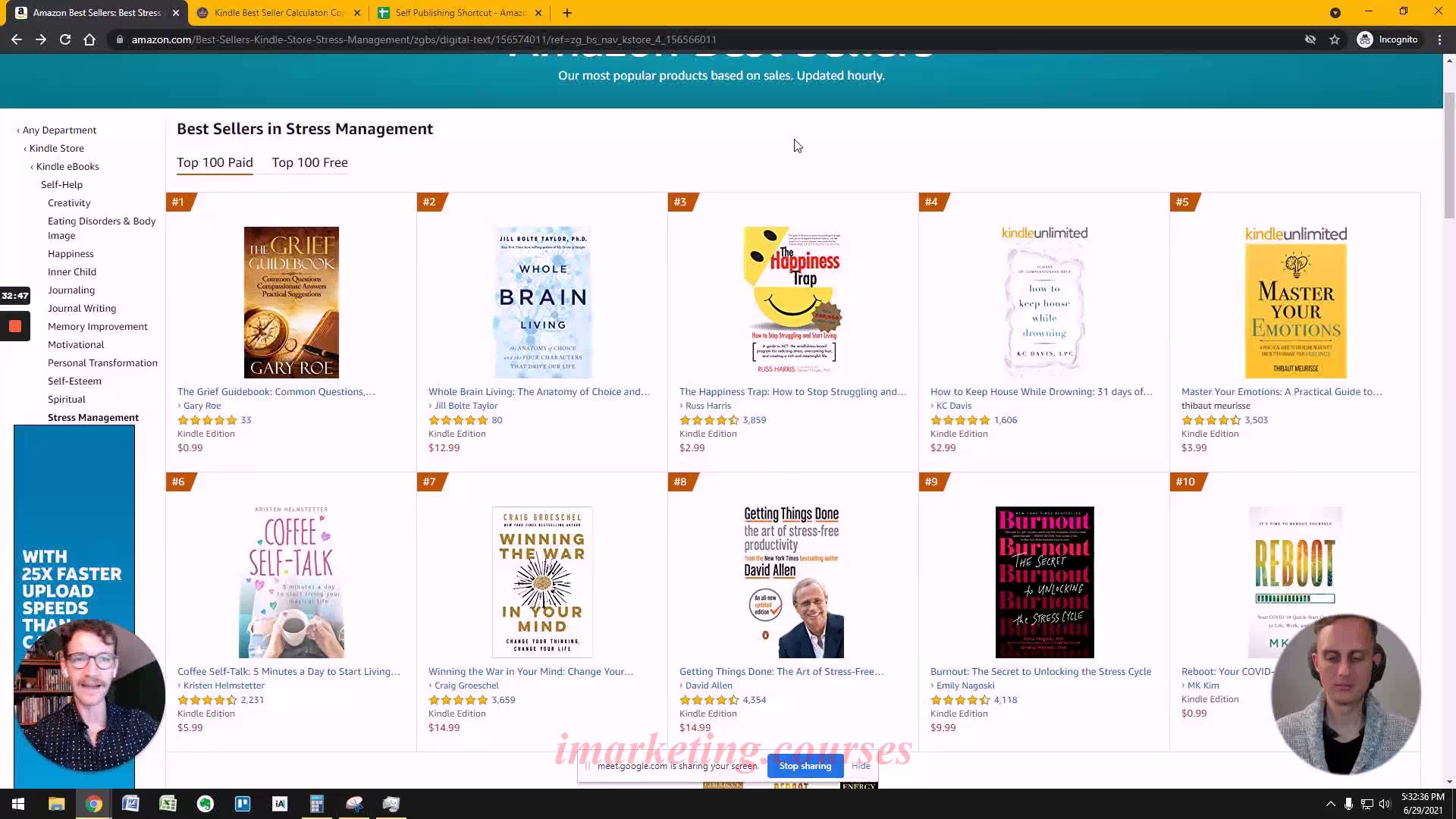

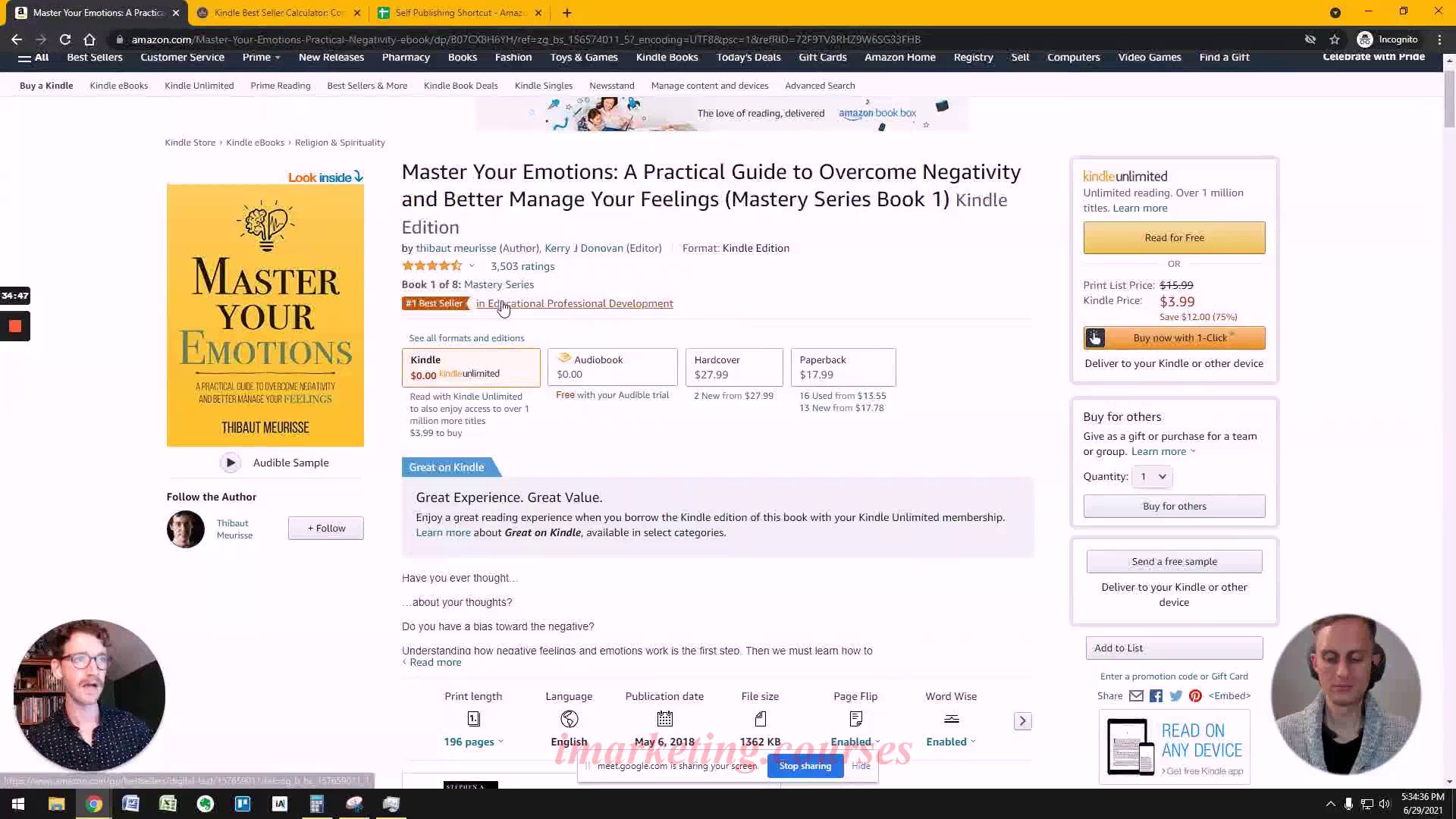
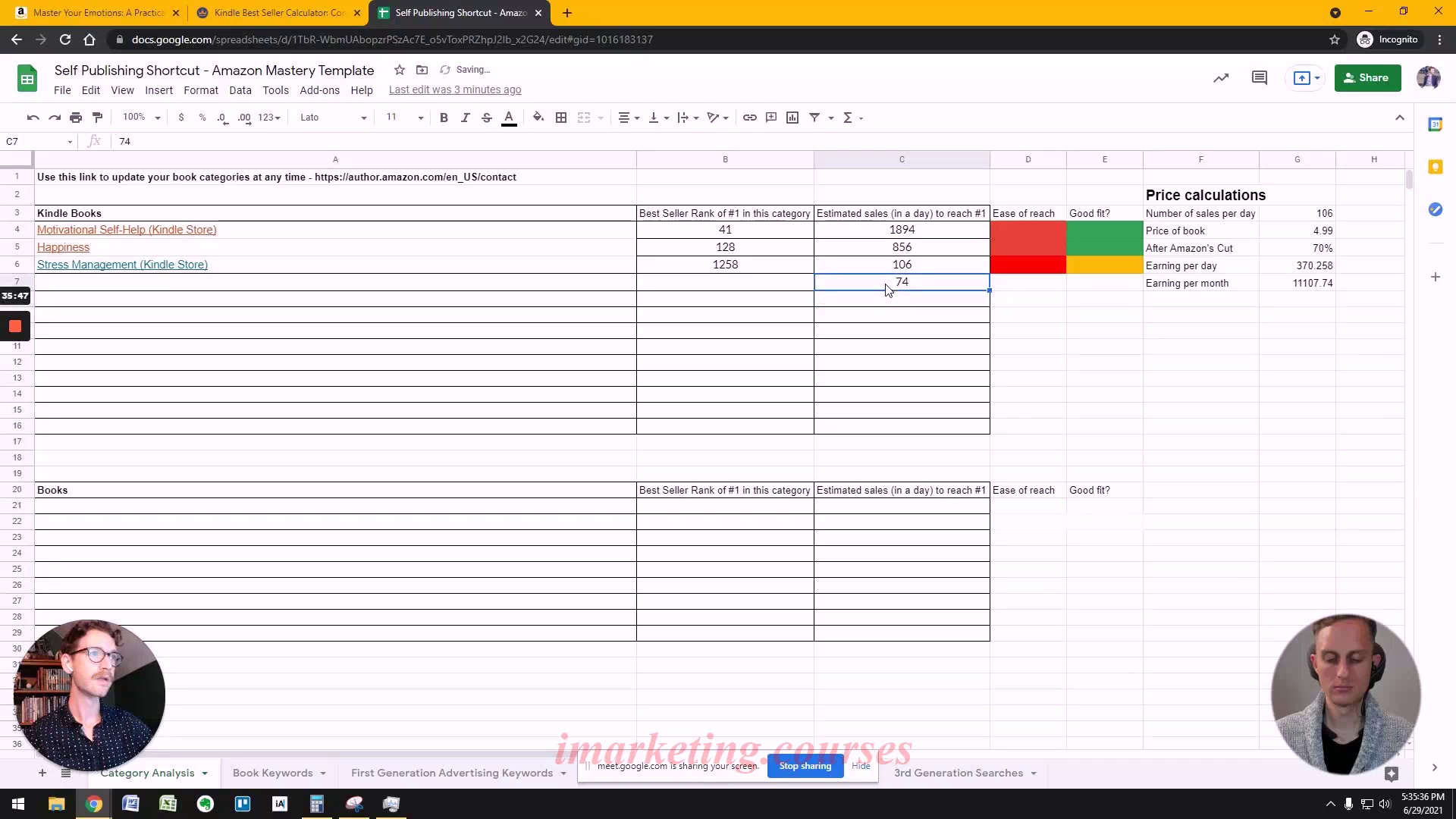

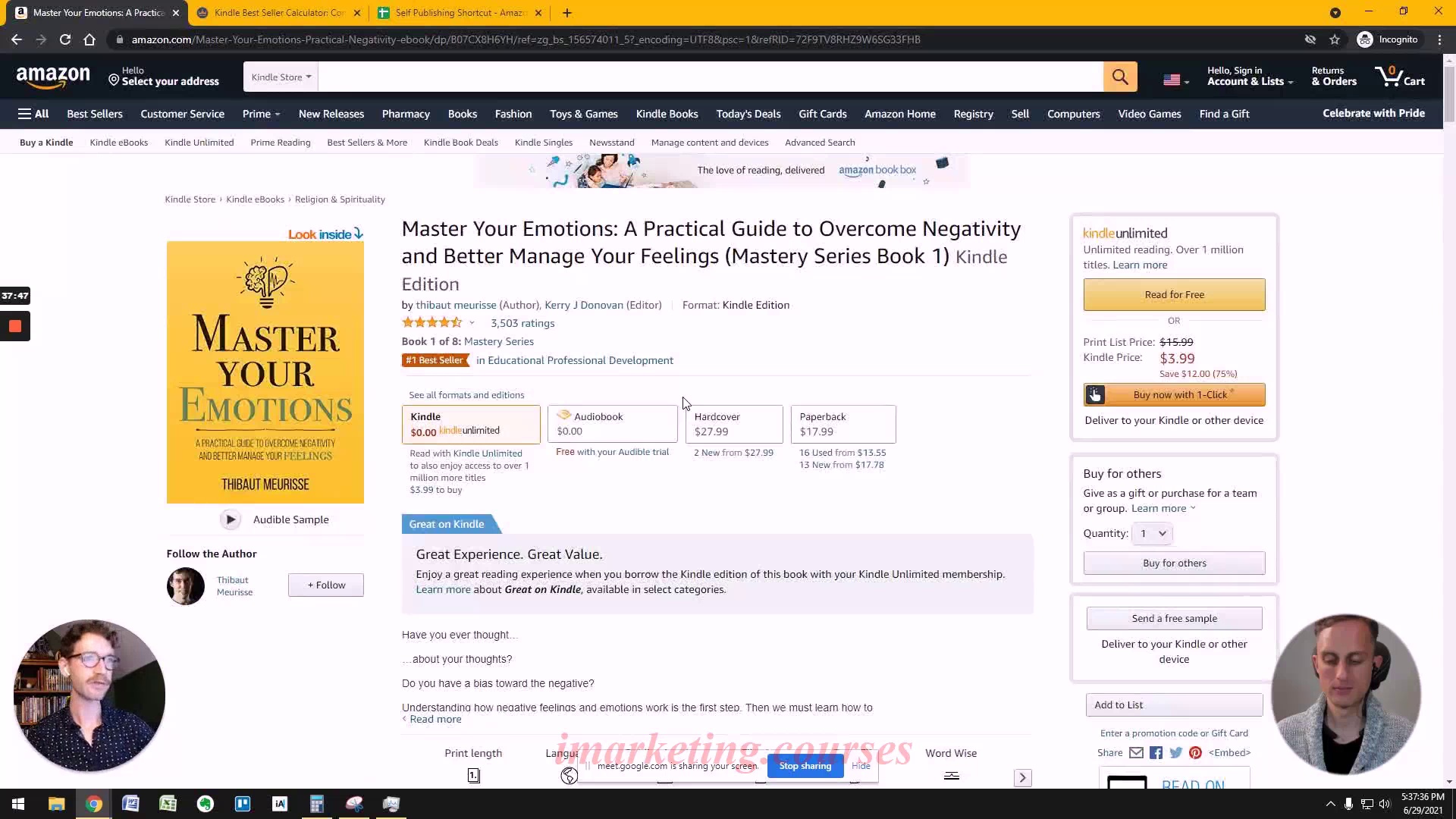
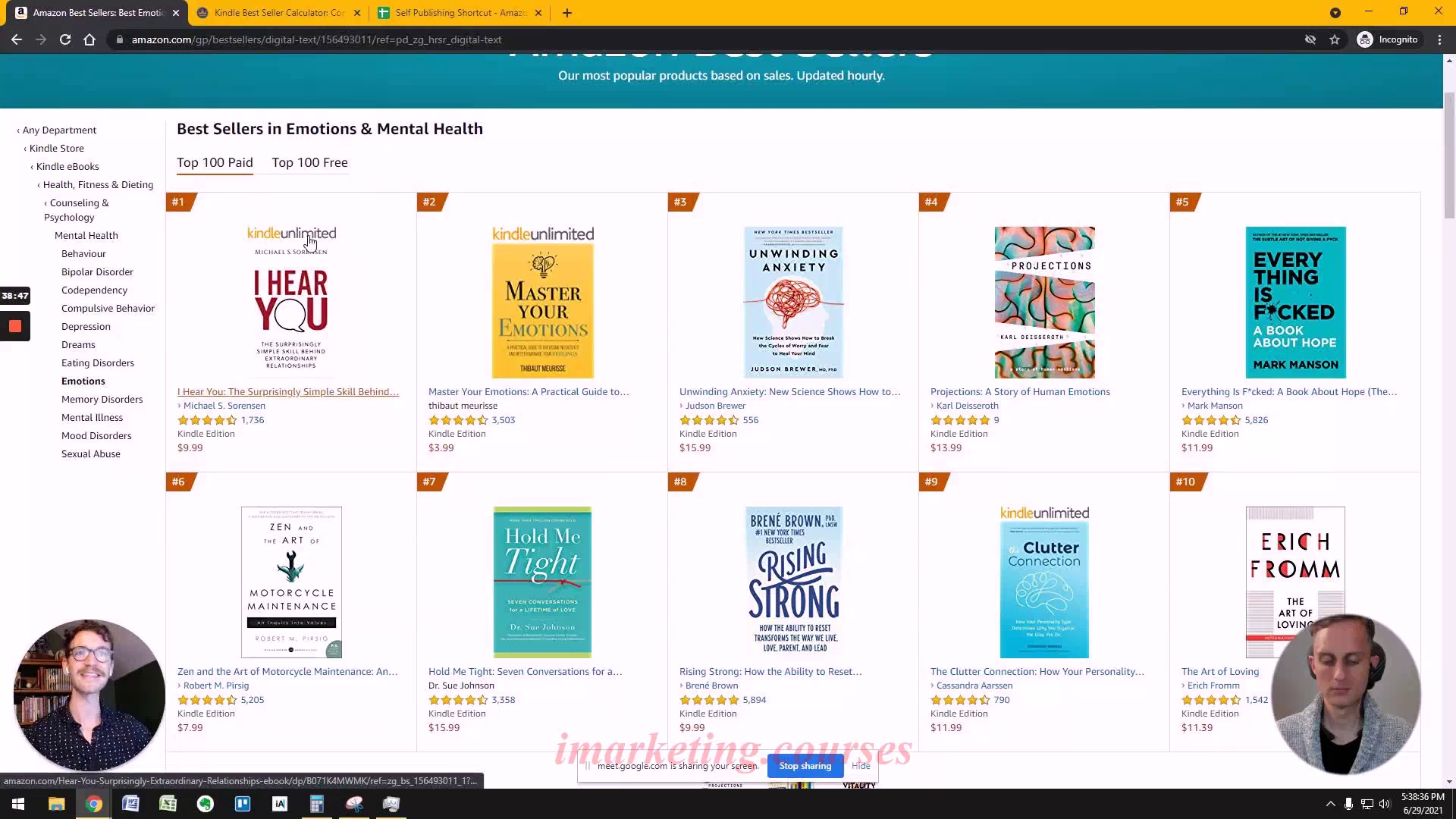
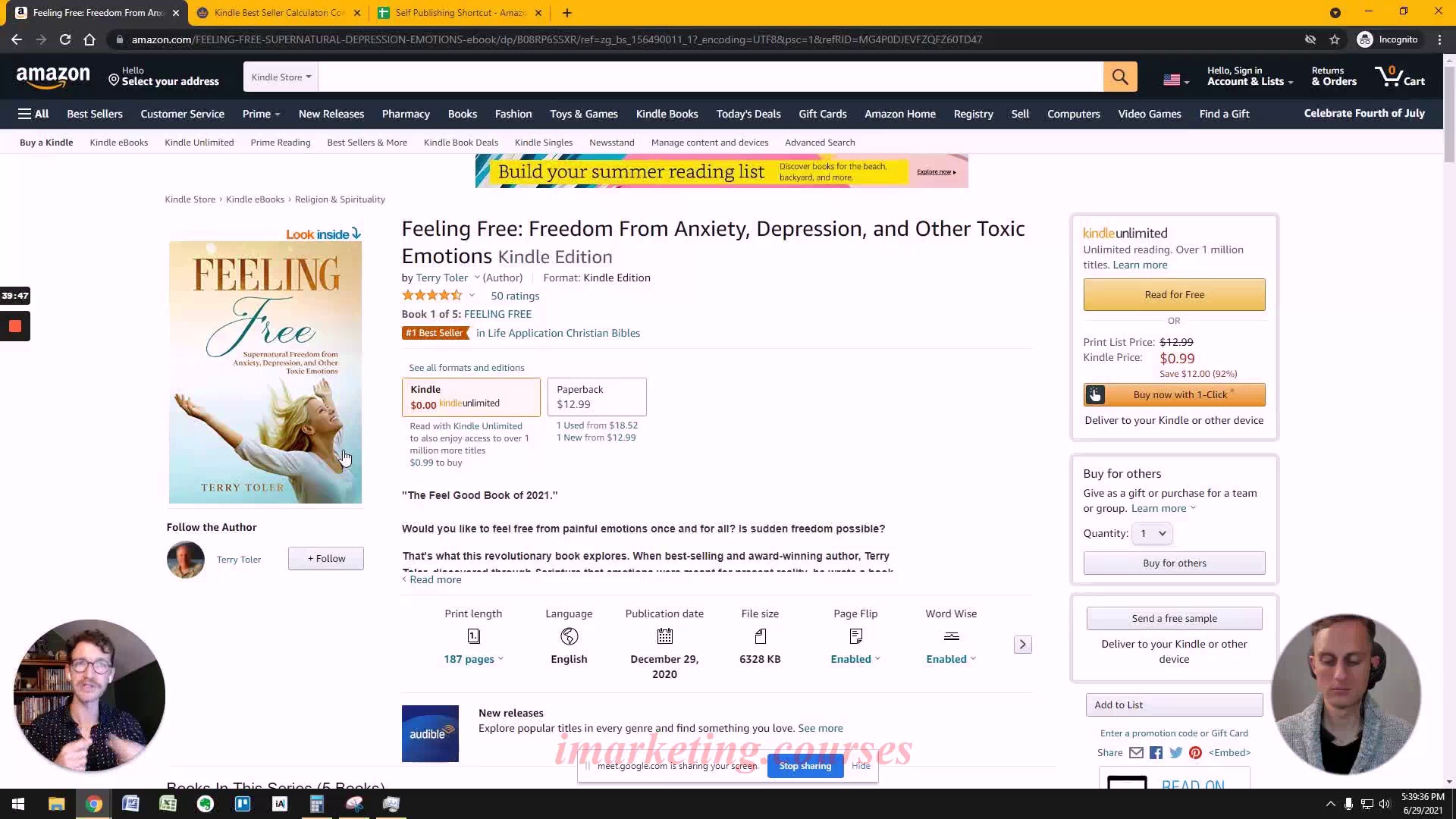

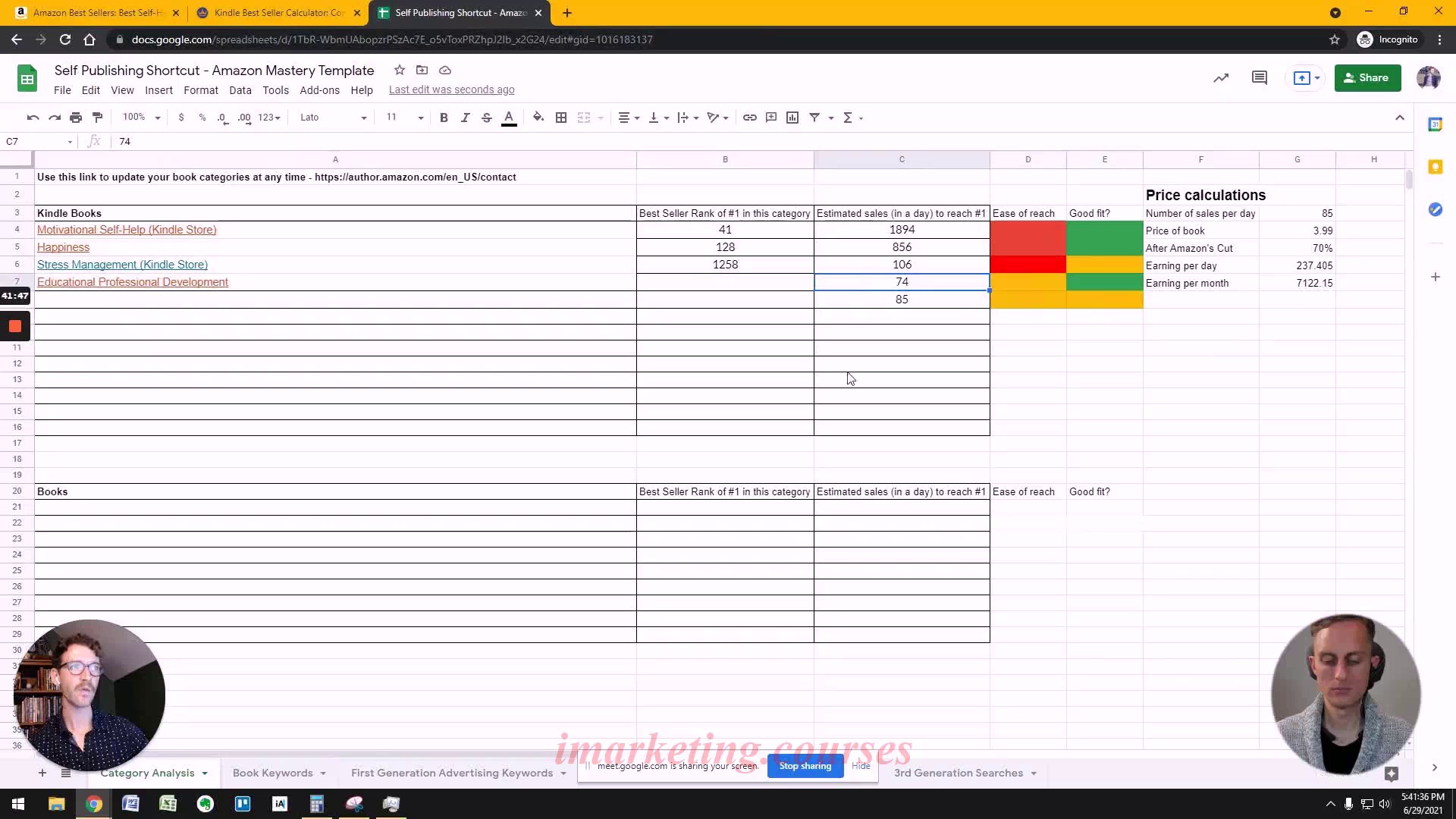
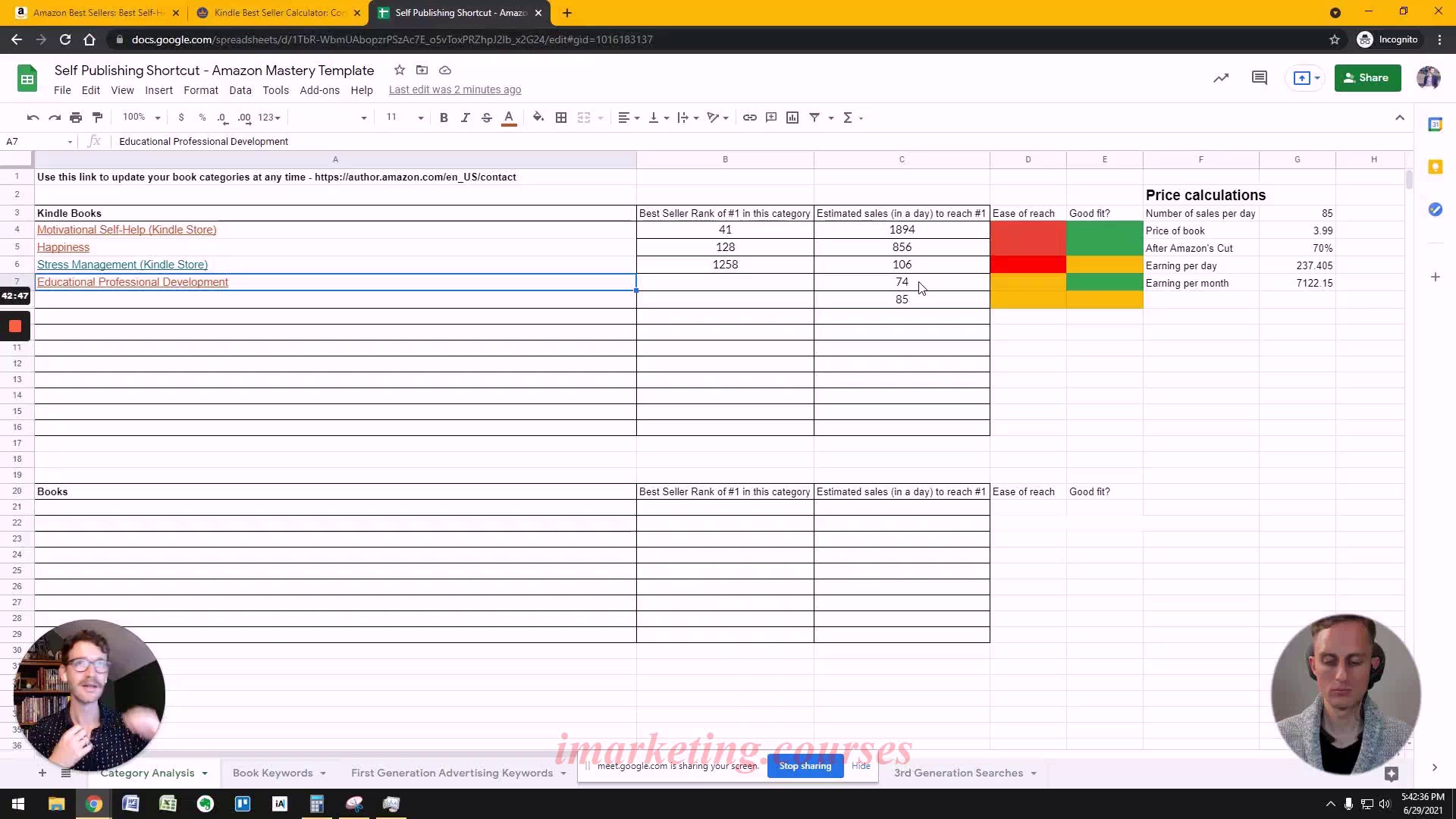
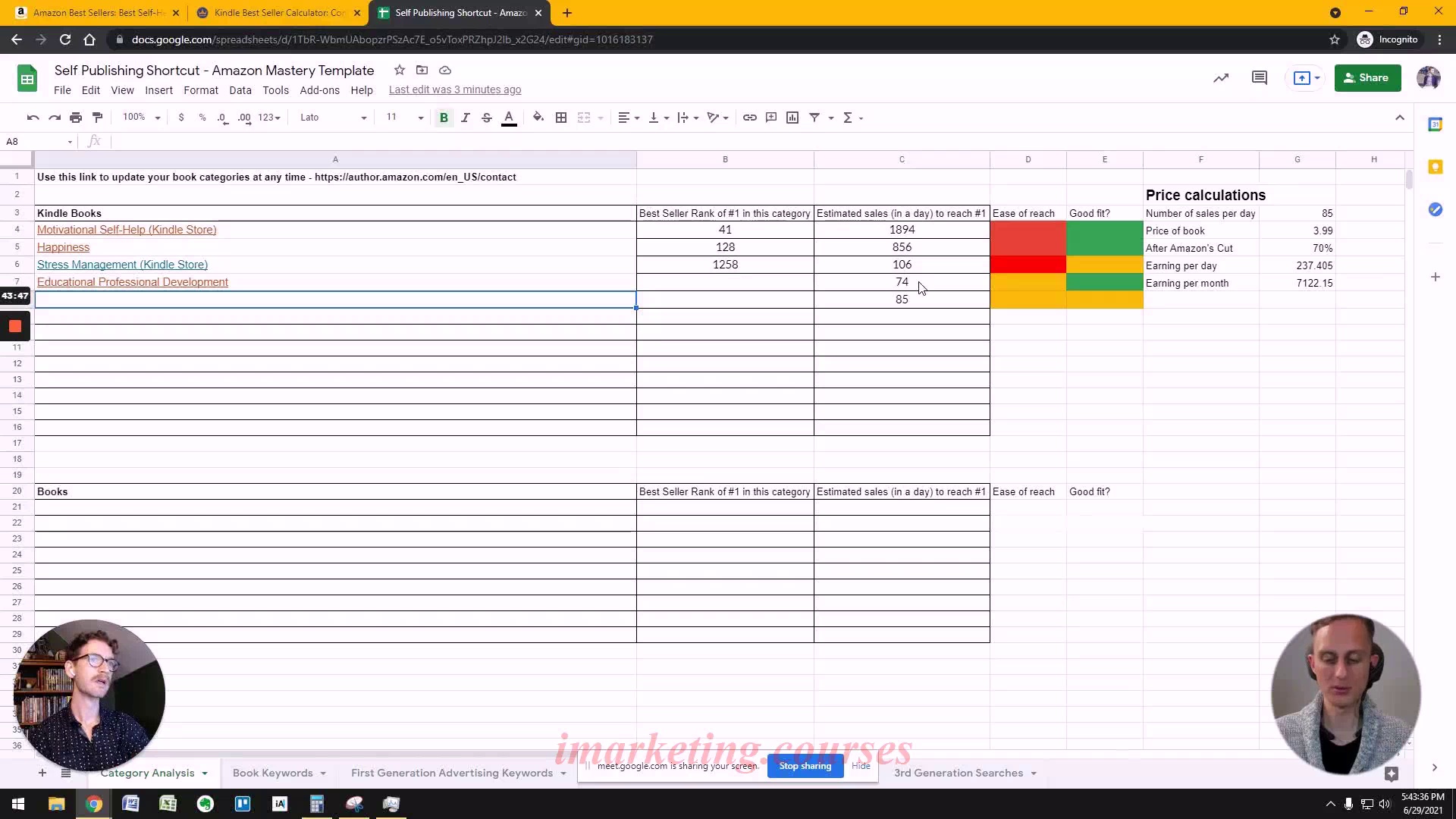
The narrator explains how to research profitable book categories on Amazon by analyzing data from bestselling books. The goal is to find a less competitive sub-category where it's easier to reach bestseller status. This "bestseller tag" results in extra promotion from Amazon, helping the book rank higher in more competitive parent categories.
For example, a self-help book would typically compete against extremely popular authors in the main Self-Help category. But the narrator found a sub-category called "Educational Professional Development" that only requires 74 sales per day for bestseller status. If optimized for this smaller category first, the book can then get a boost in the broader Self-Help category.
The key is researching the ranking numbers, sales data, and sub-category options for current bestsellers. This reveals opportunities for entering less competitive niches. As the narrator says, "It all starts with figuring out where you can win in a small pond in order to get strong enough to win in the big pond."
.Tim-D-AmazonBookPubl Misc 2 to 3 - Part 5























































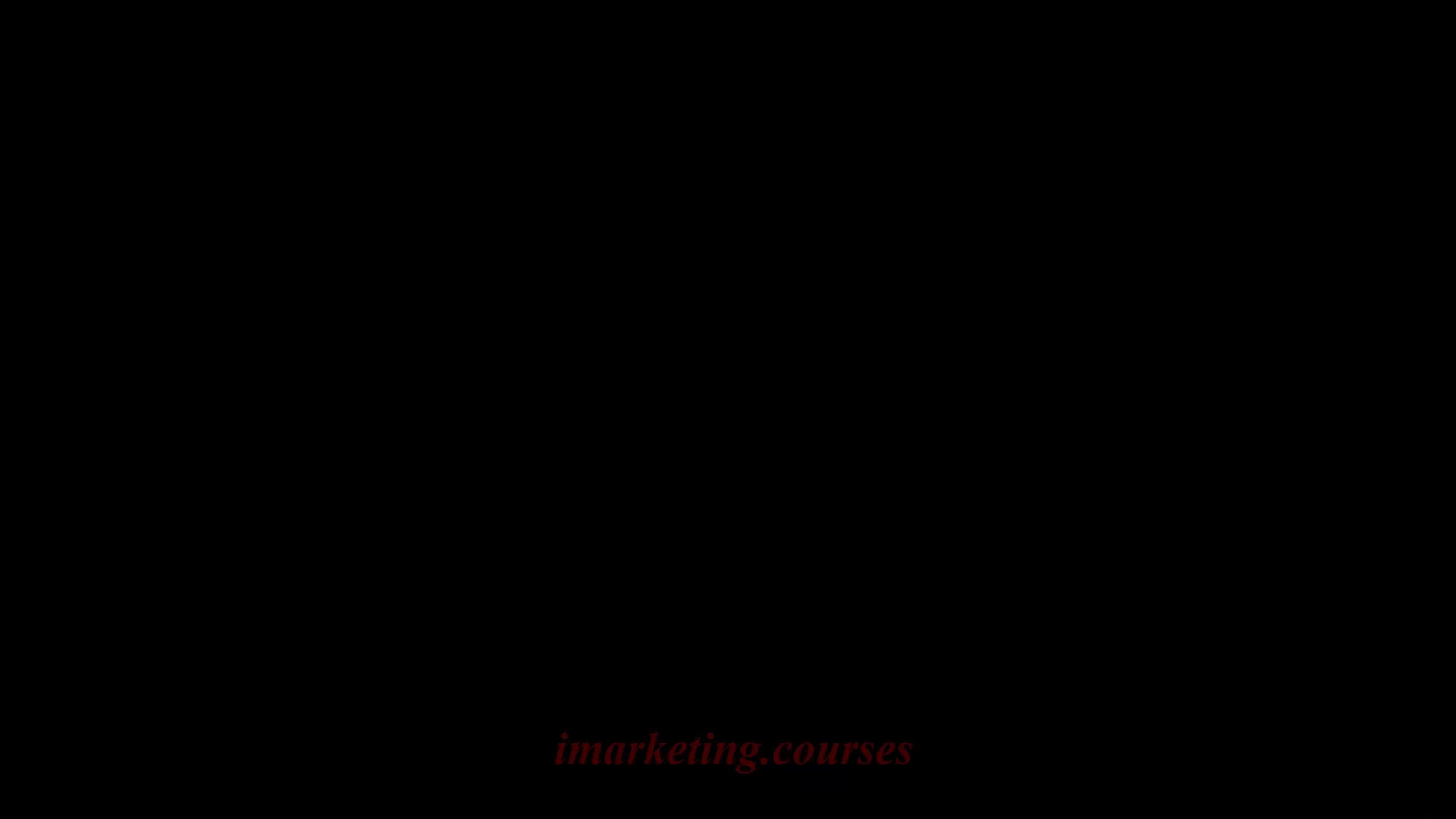
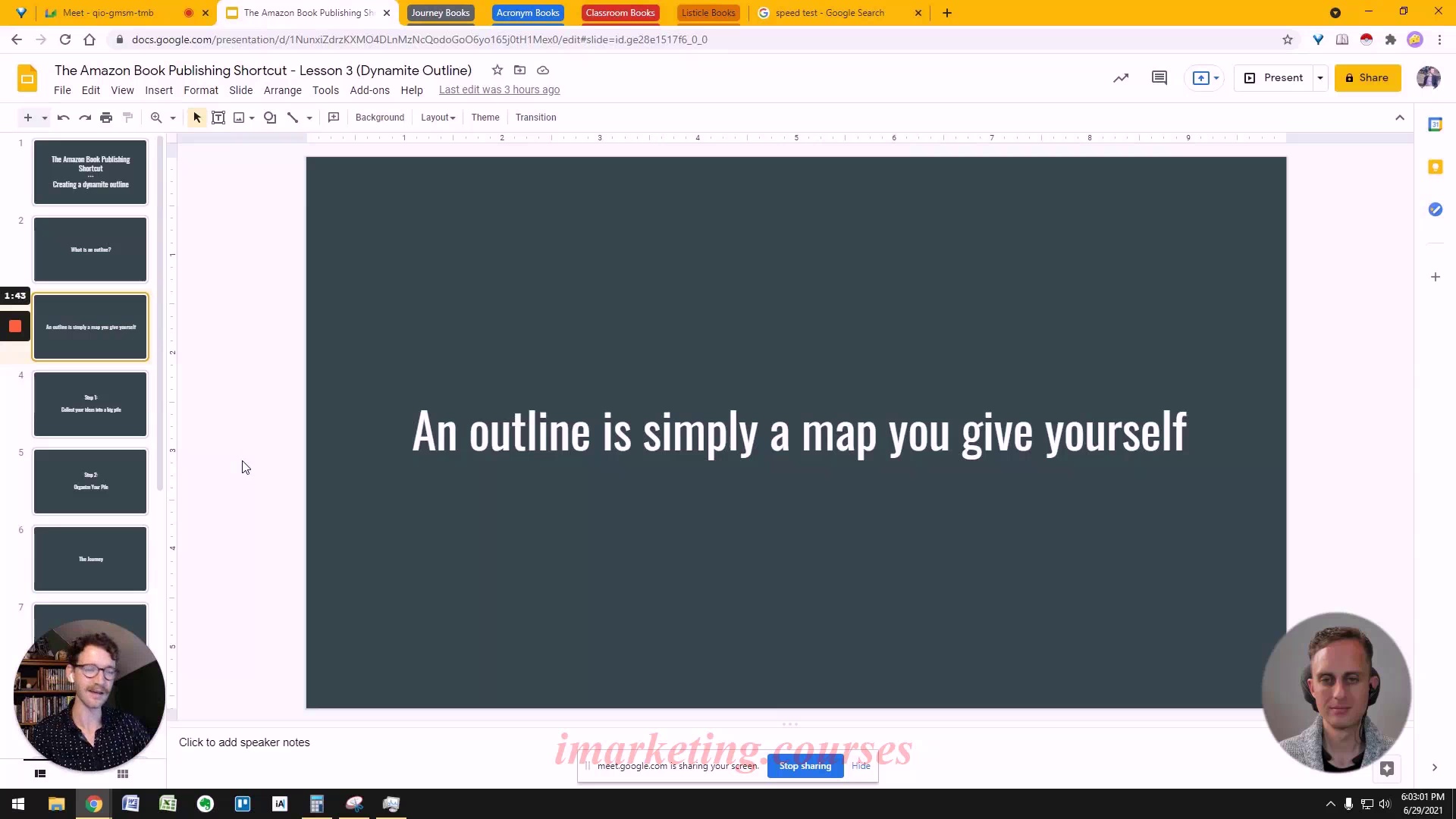
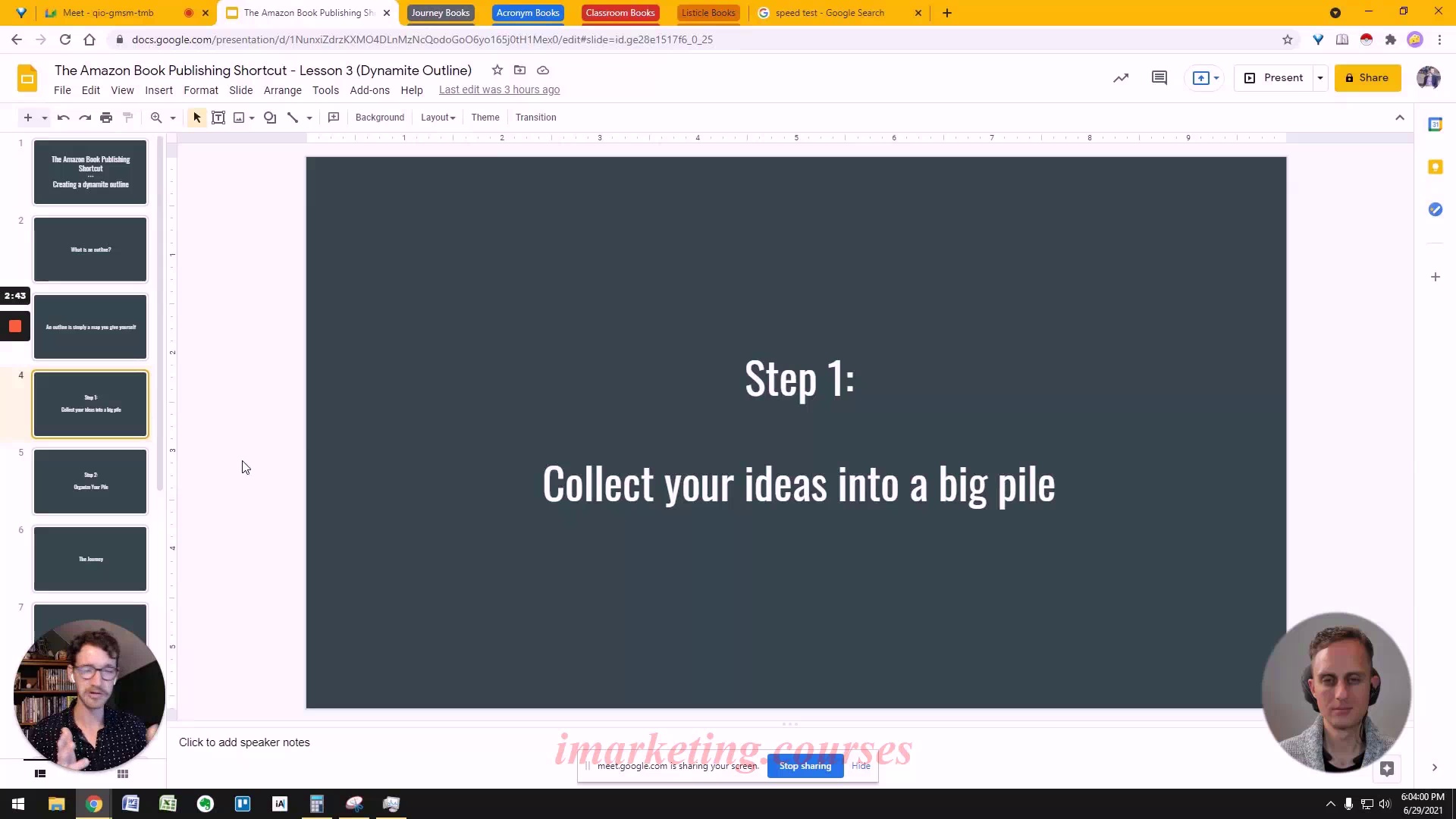
The narrator explains that creating an outline is crucial for writing a book faster. It provides a map so you don't have to guess what to write next or where there are holes.
An outline is like a treasure map showing different paths to help you reach the end of the book efficiently. There are two steps:
1. Collect all your ideas into a big pile, whether from existing content or new brainstorming.
2. Organize the pile into a structure. Many get tripped up here because they don't know how to order their random ideas.
The narrator then introduces four standard outline types to use when organizing your ideas:
.